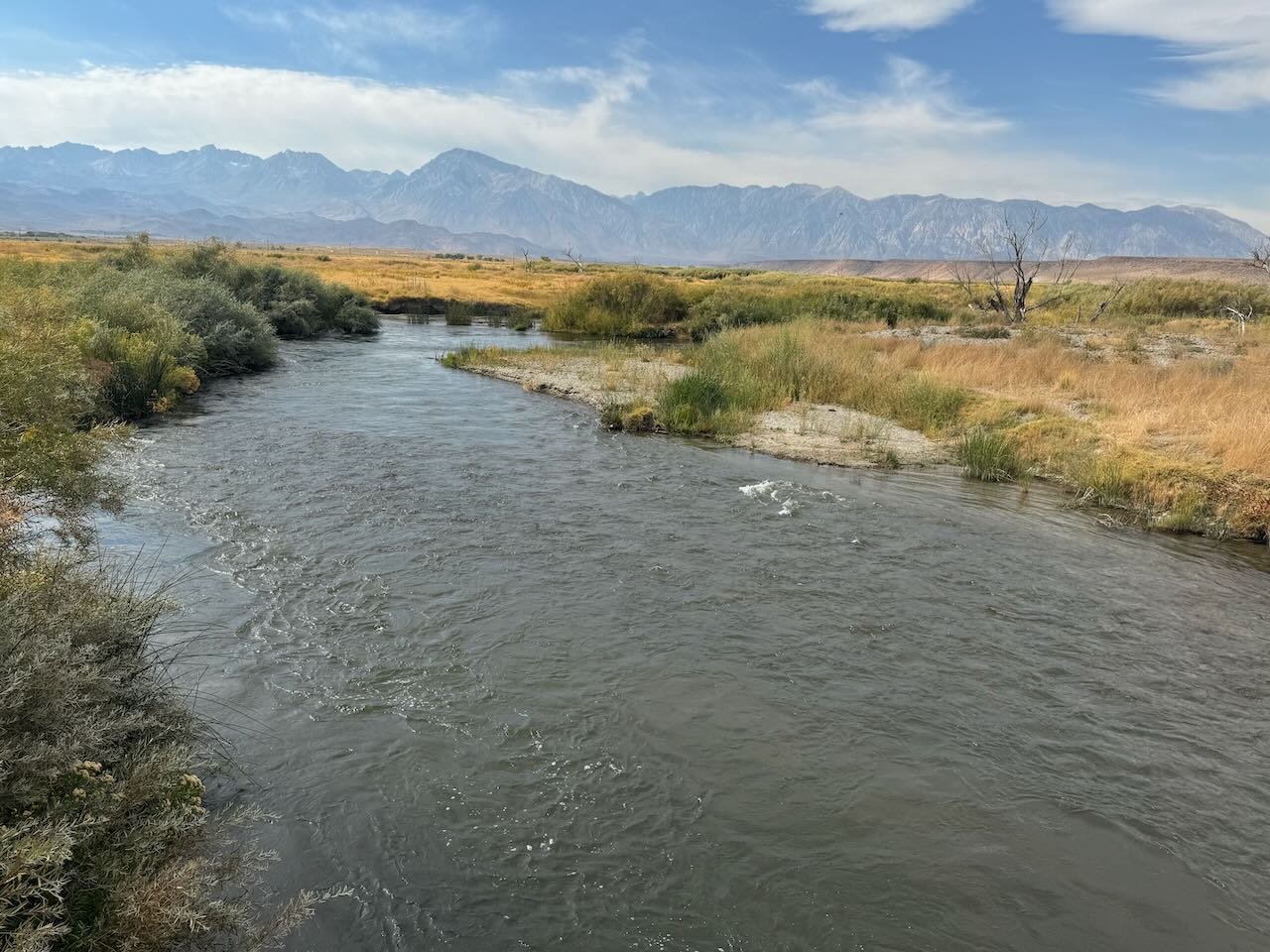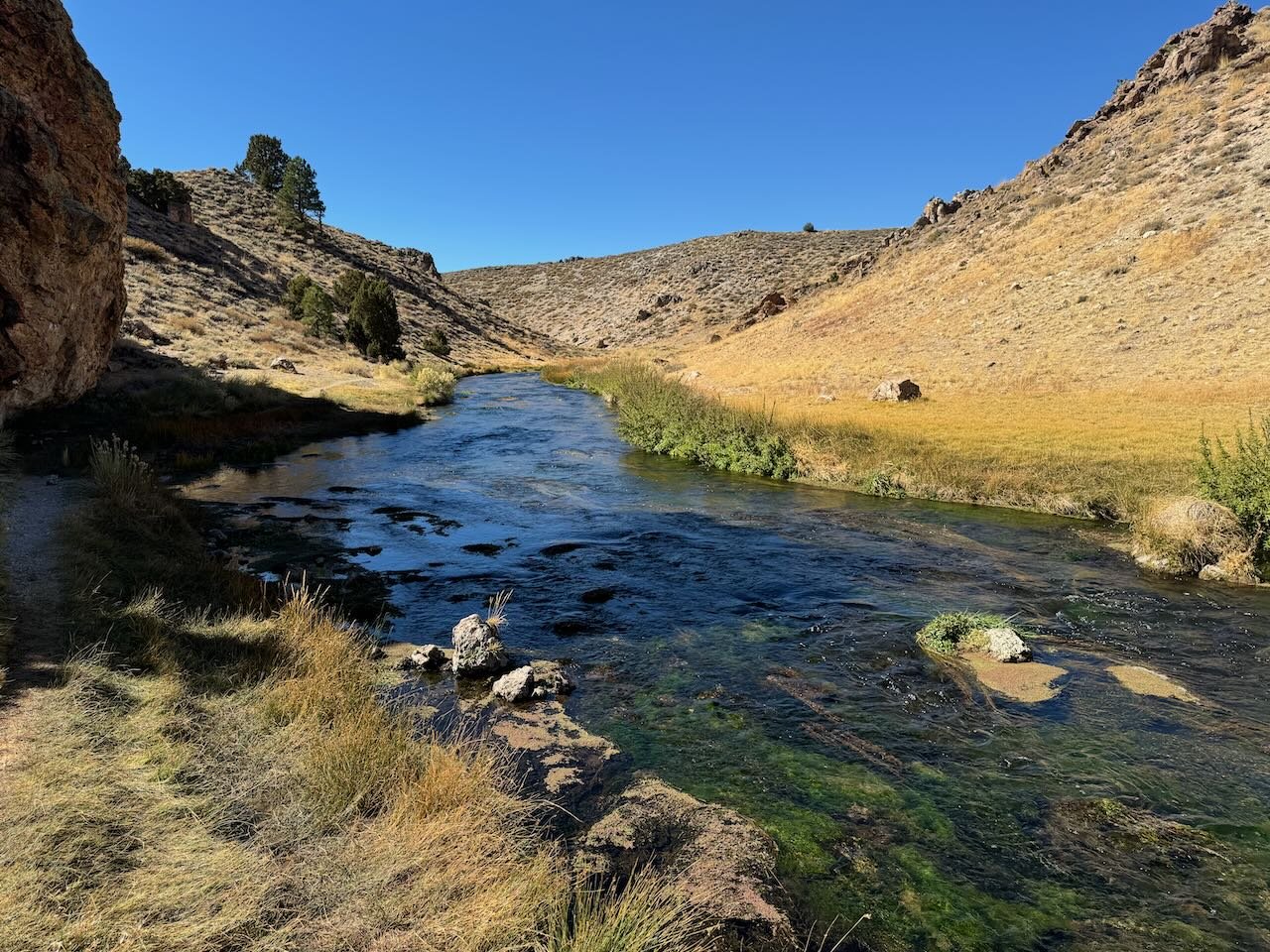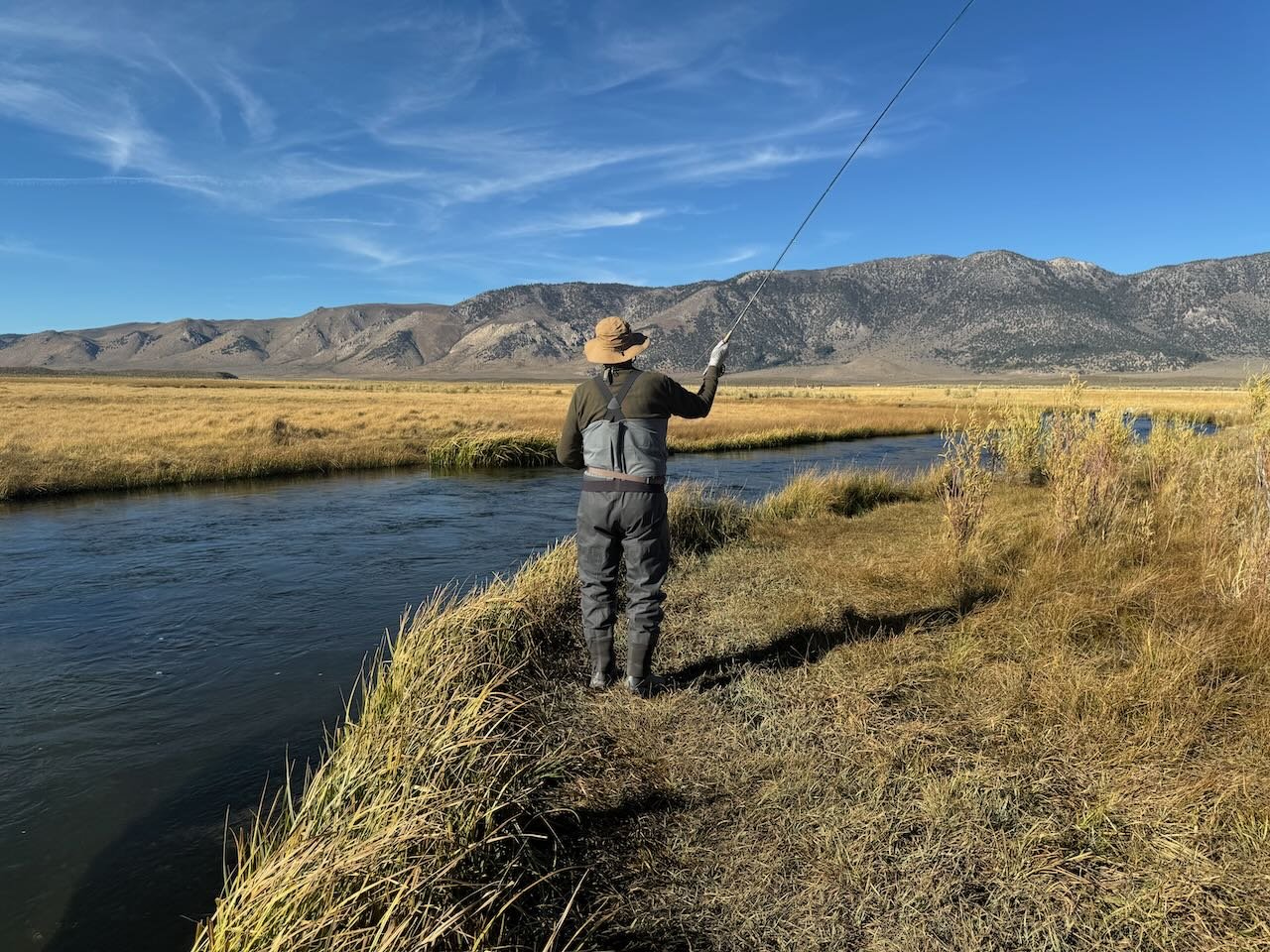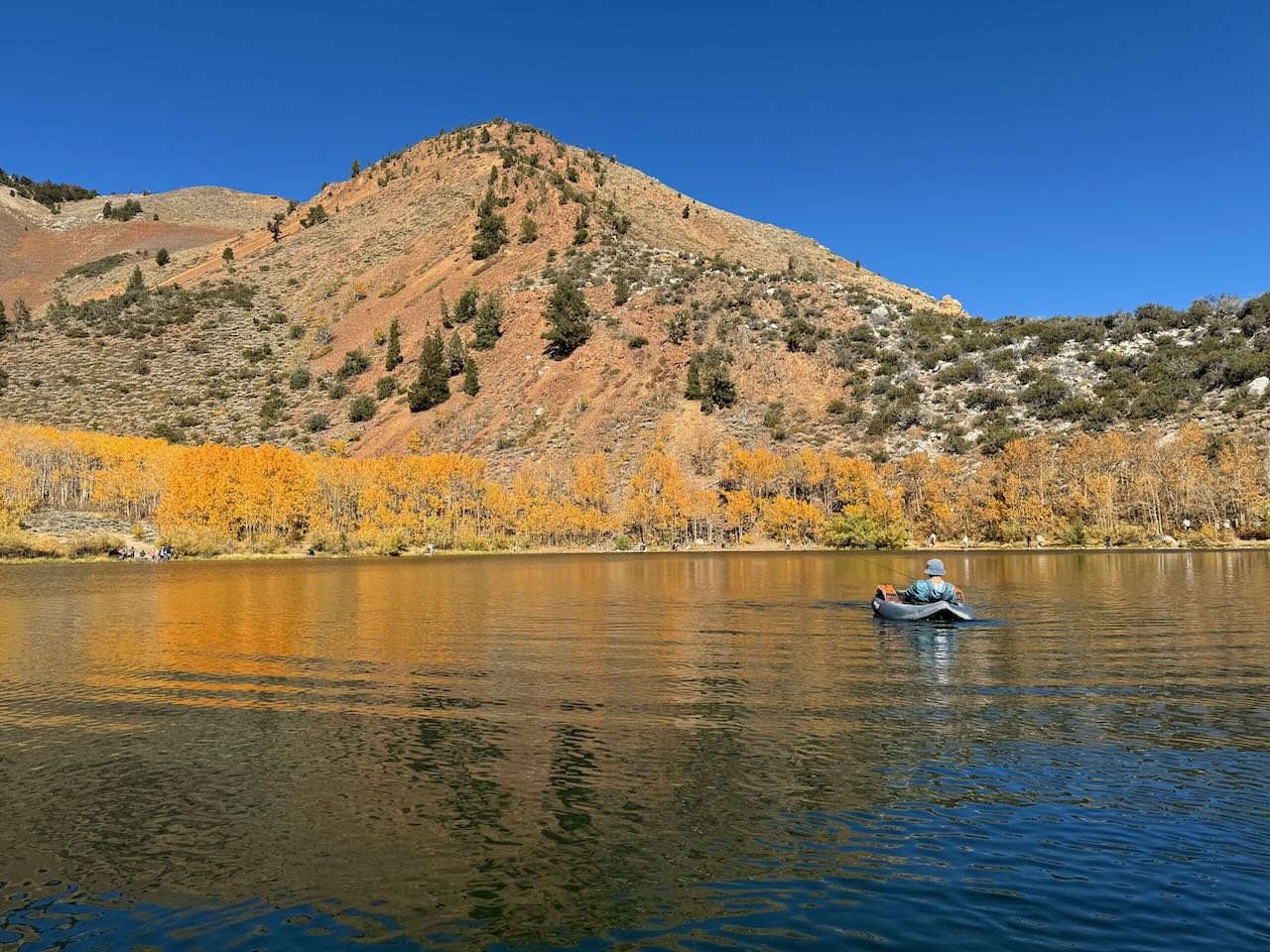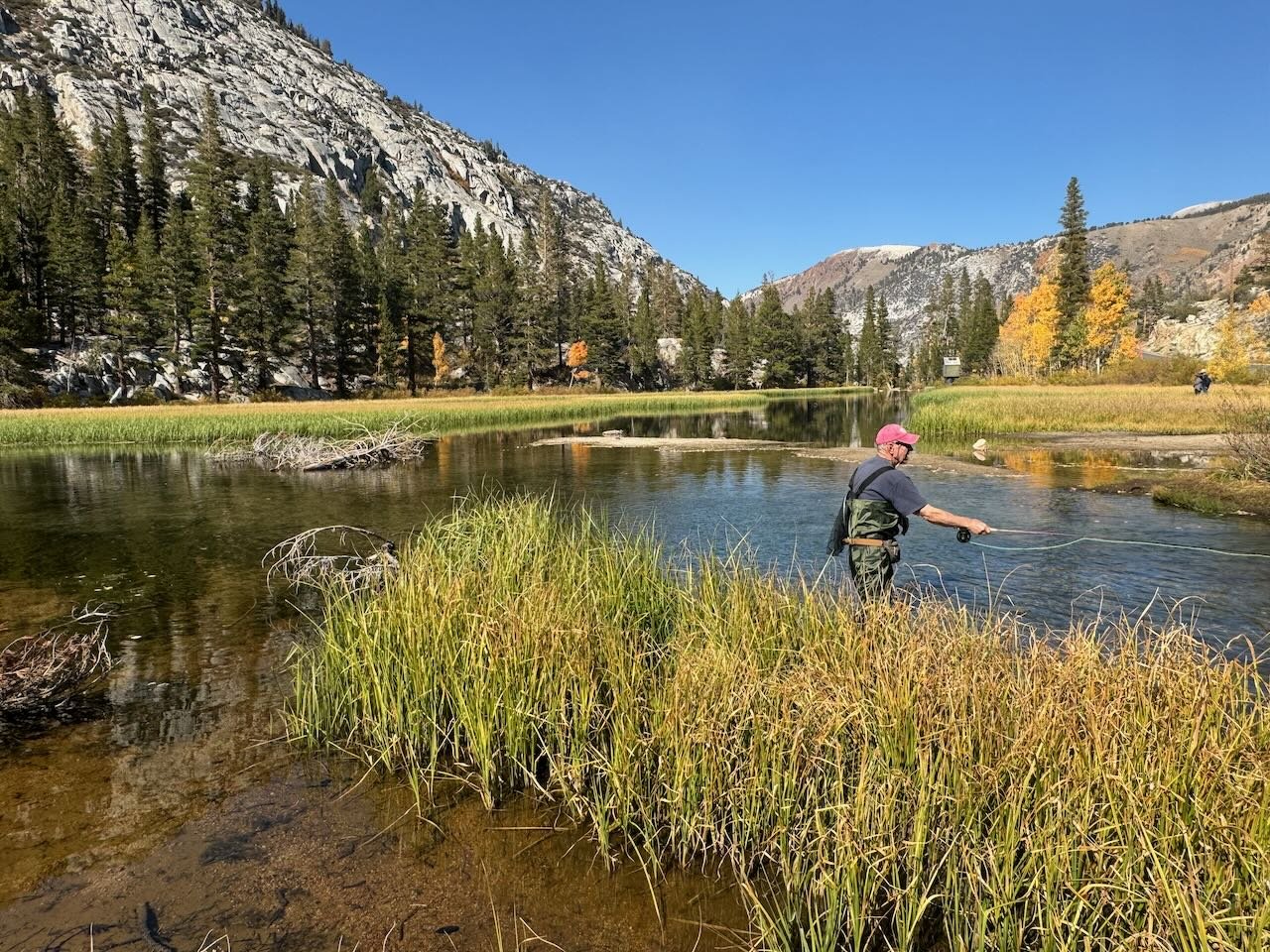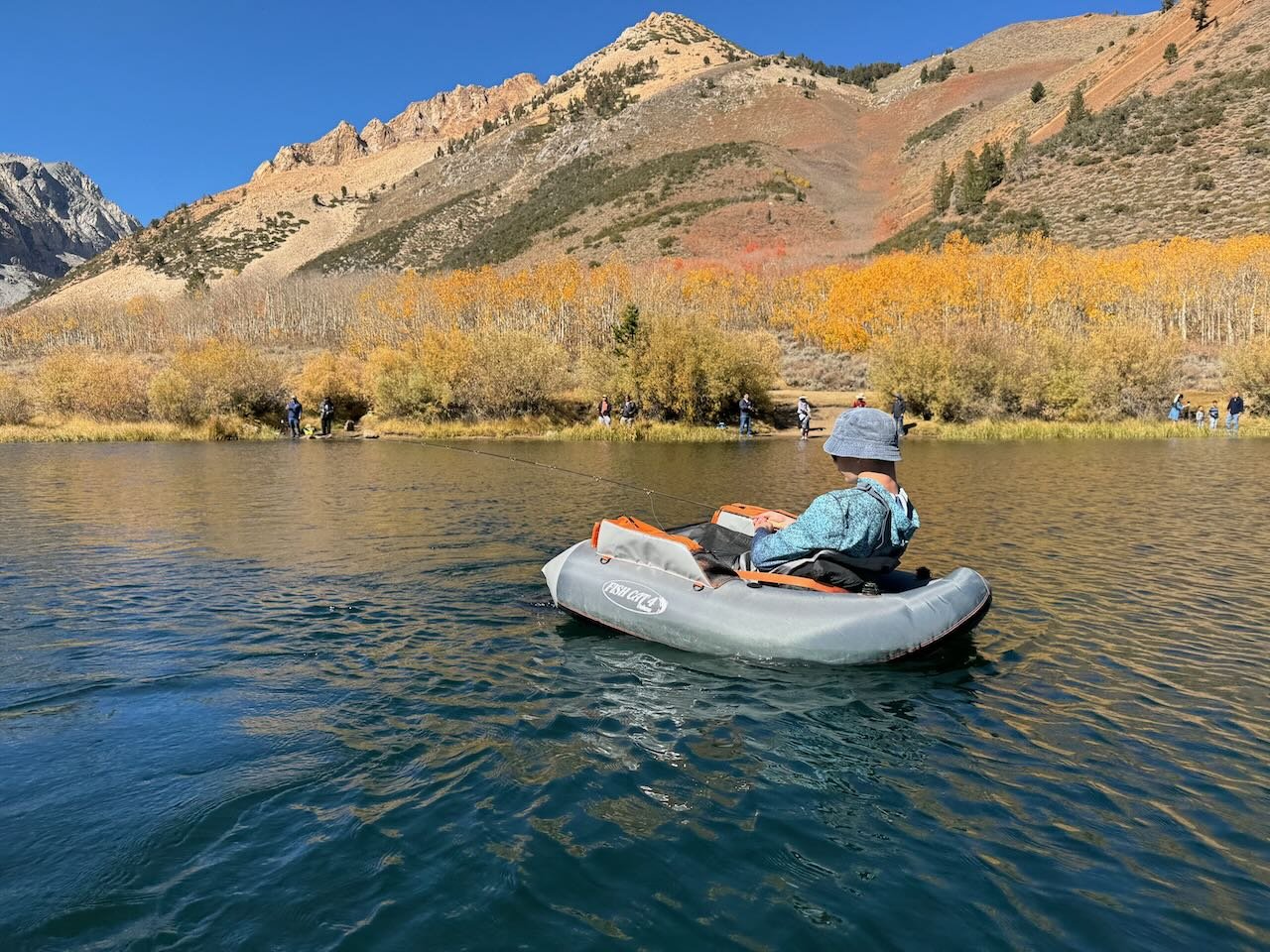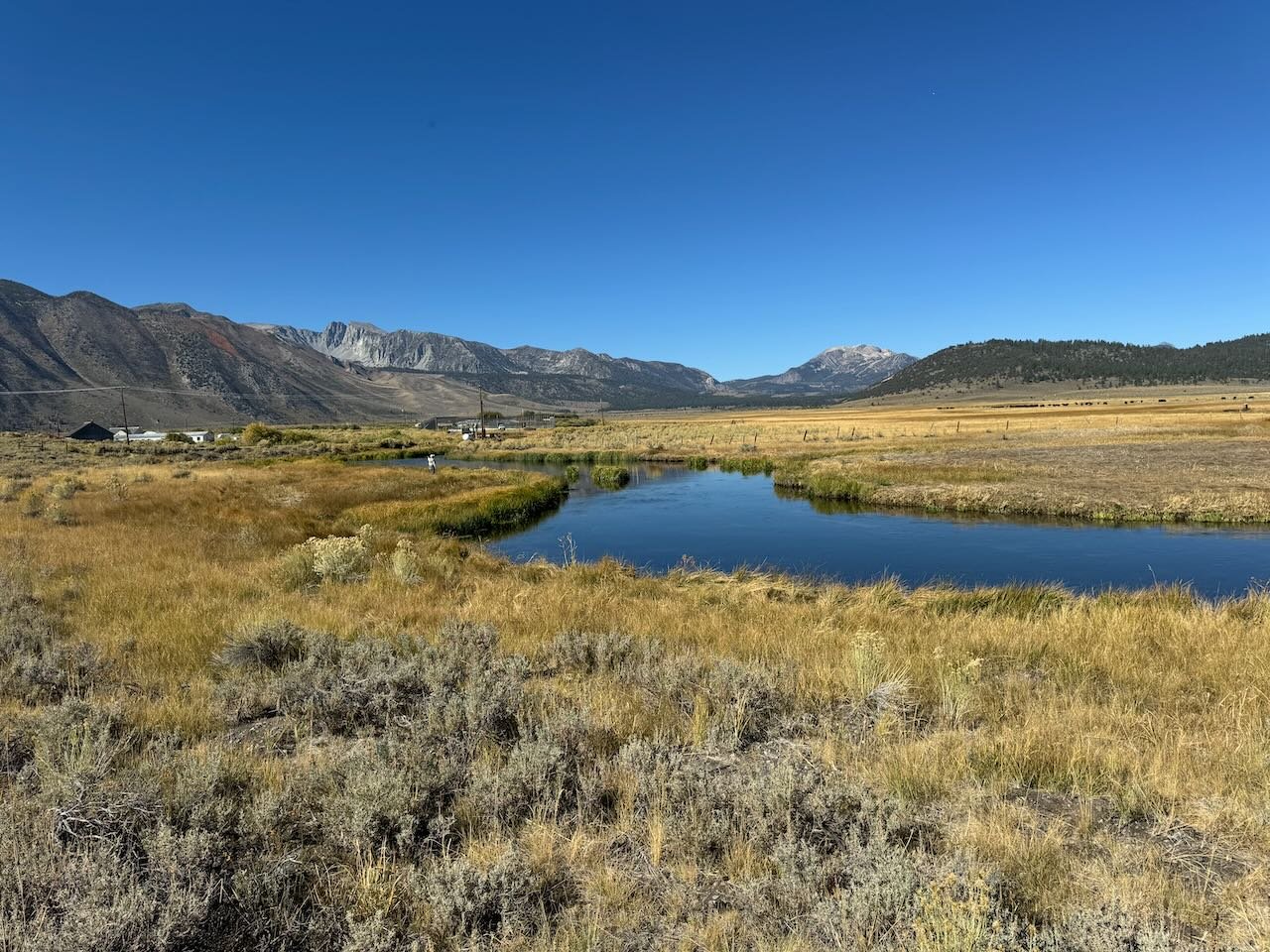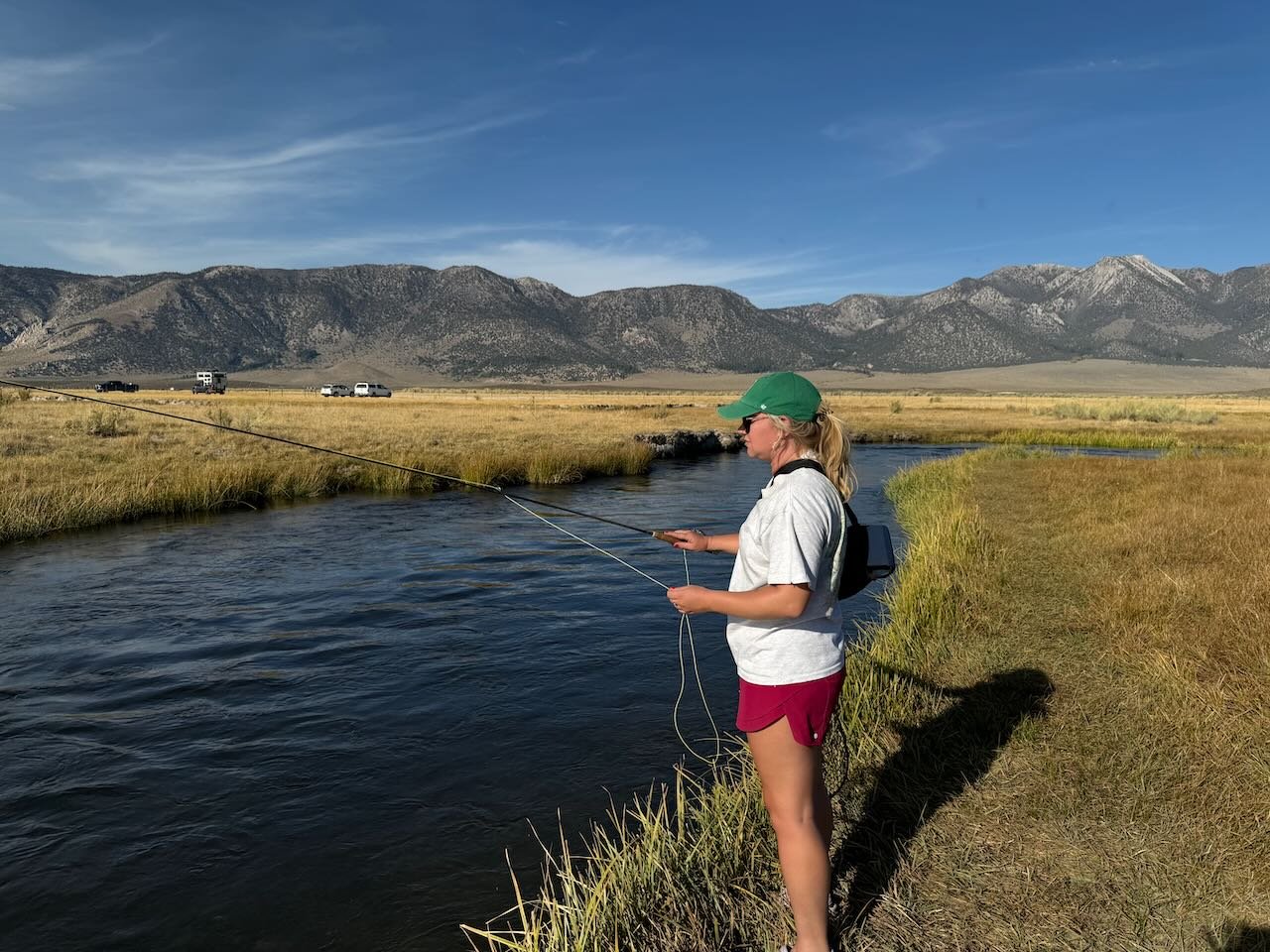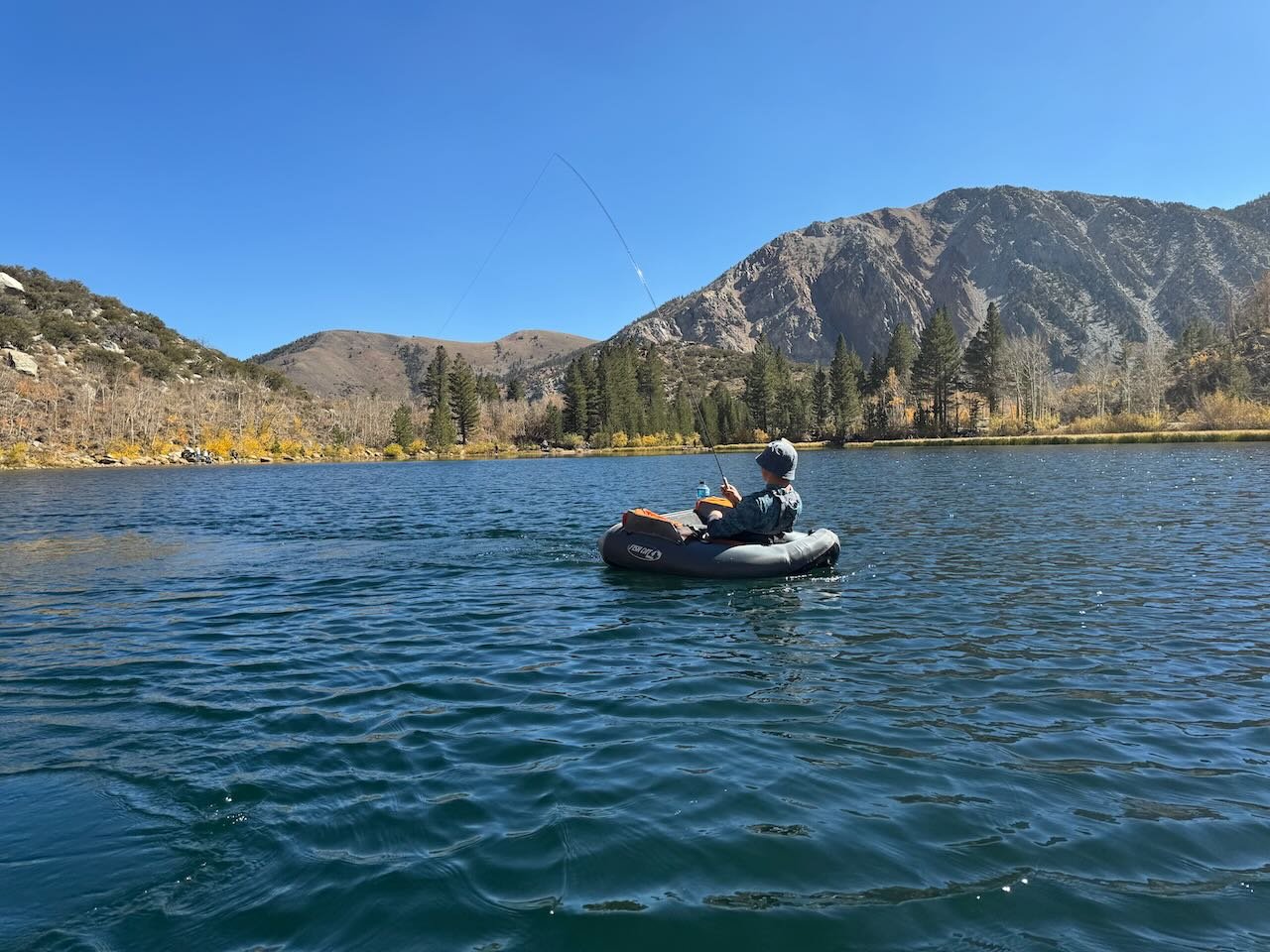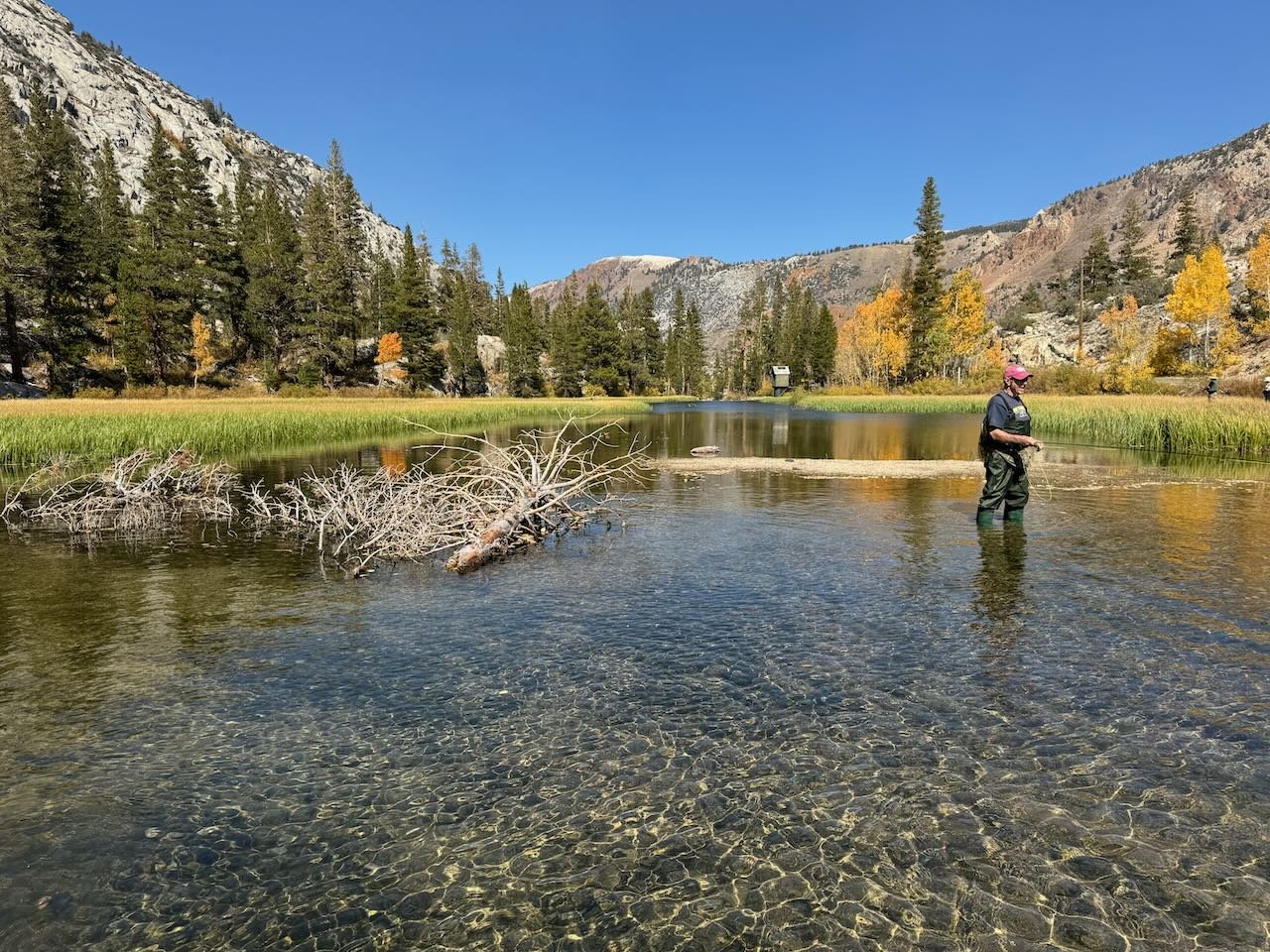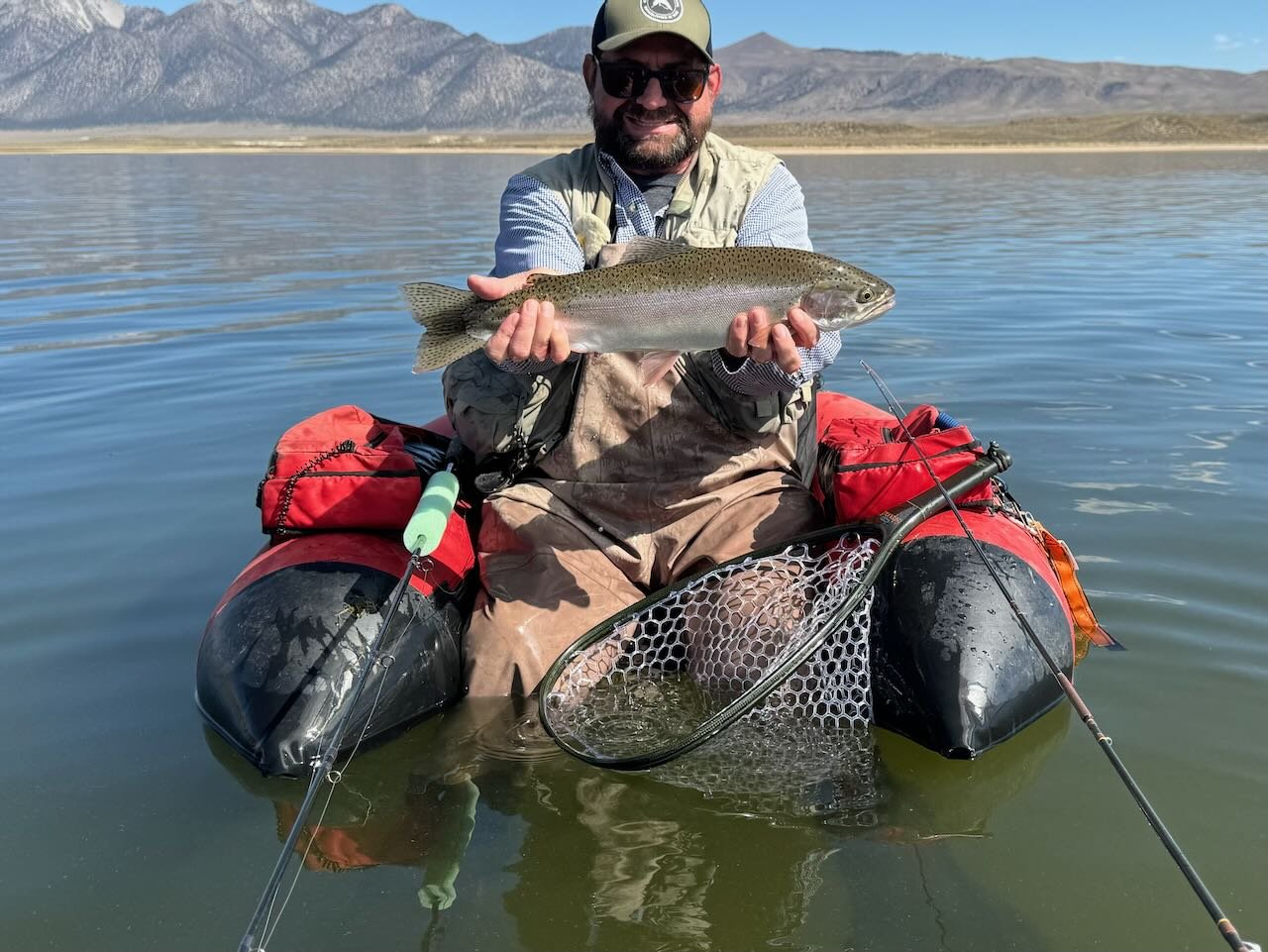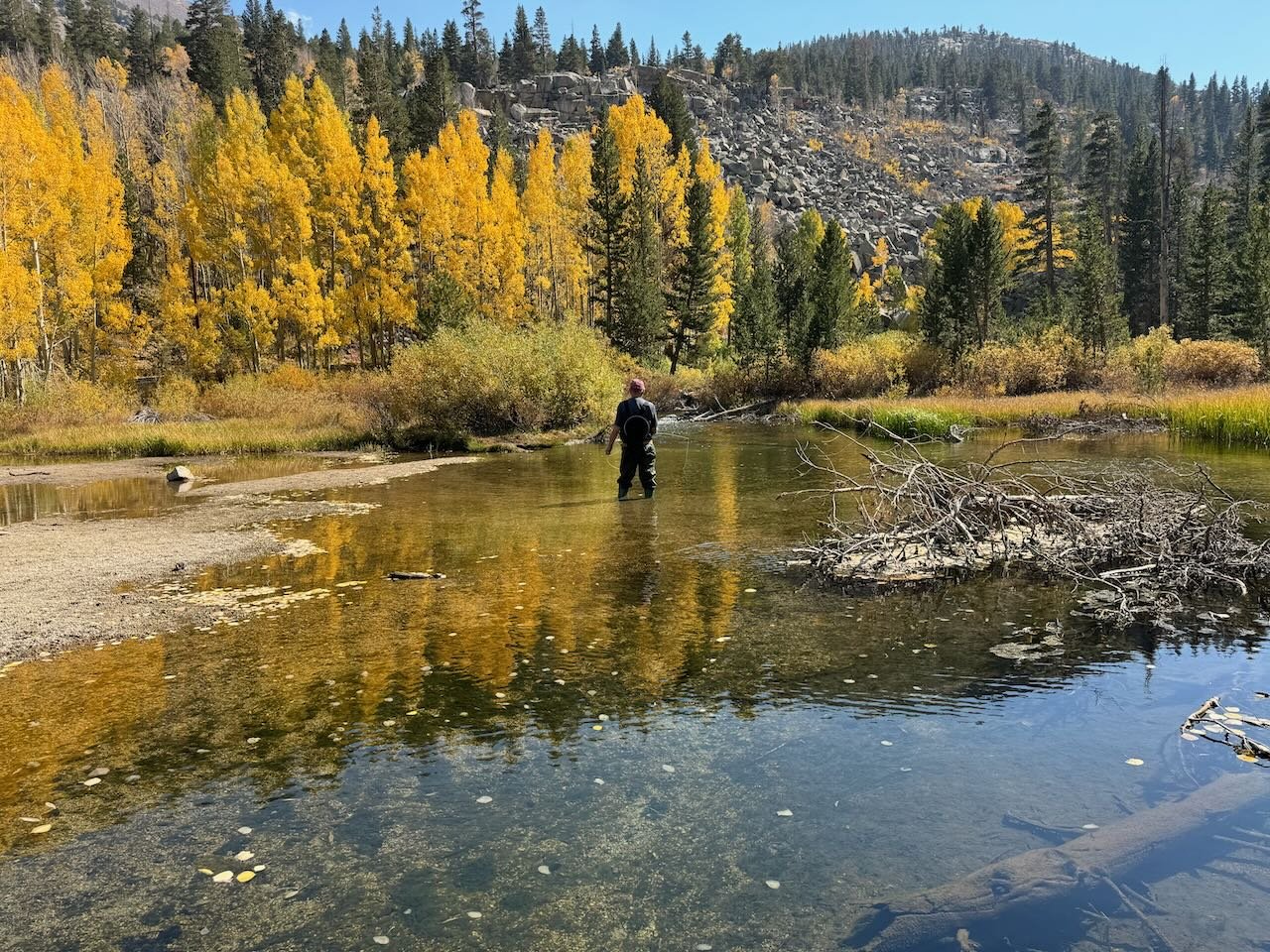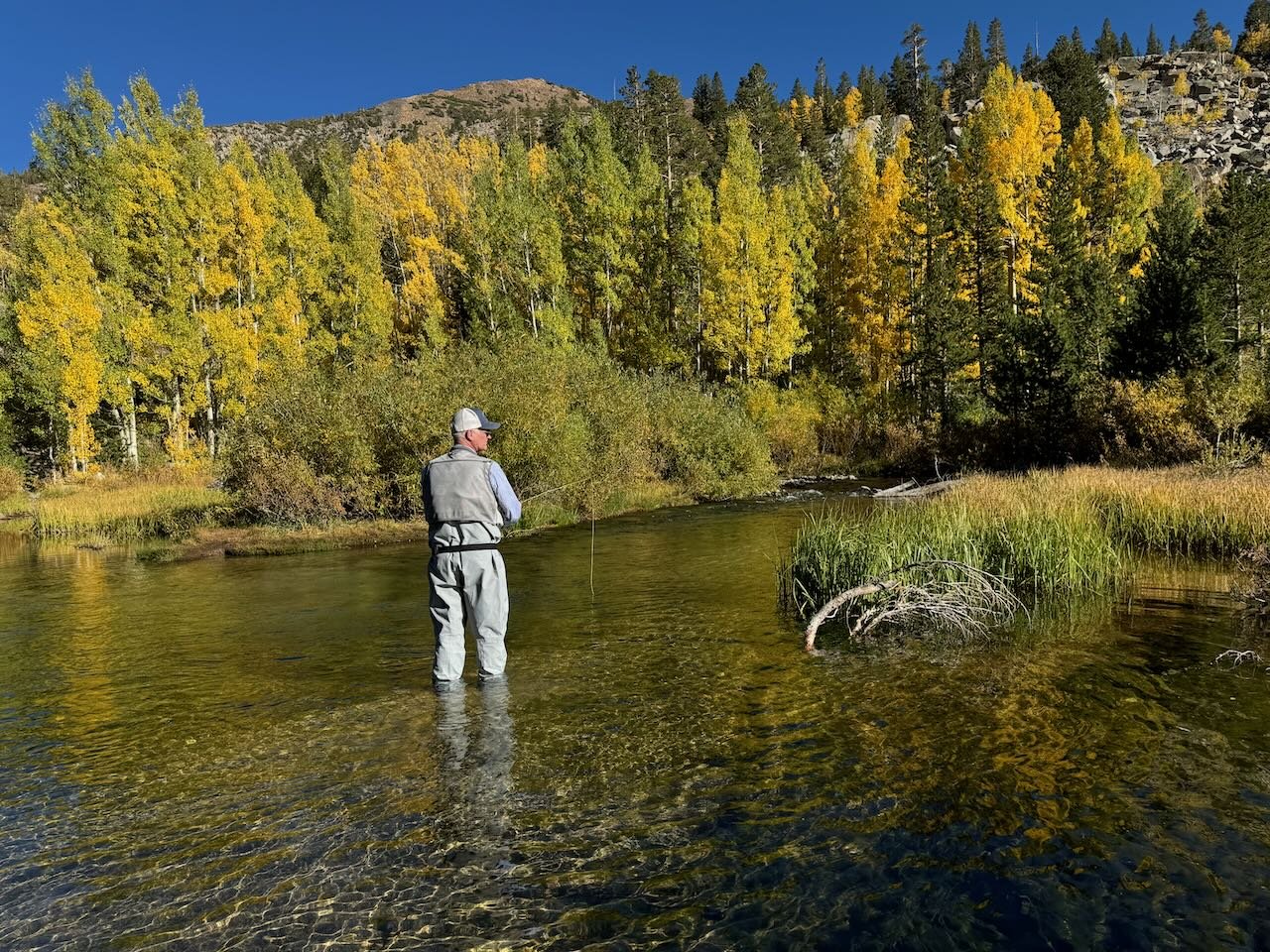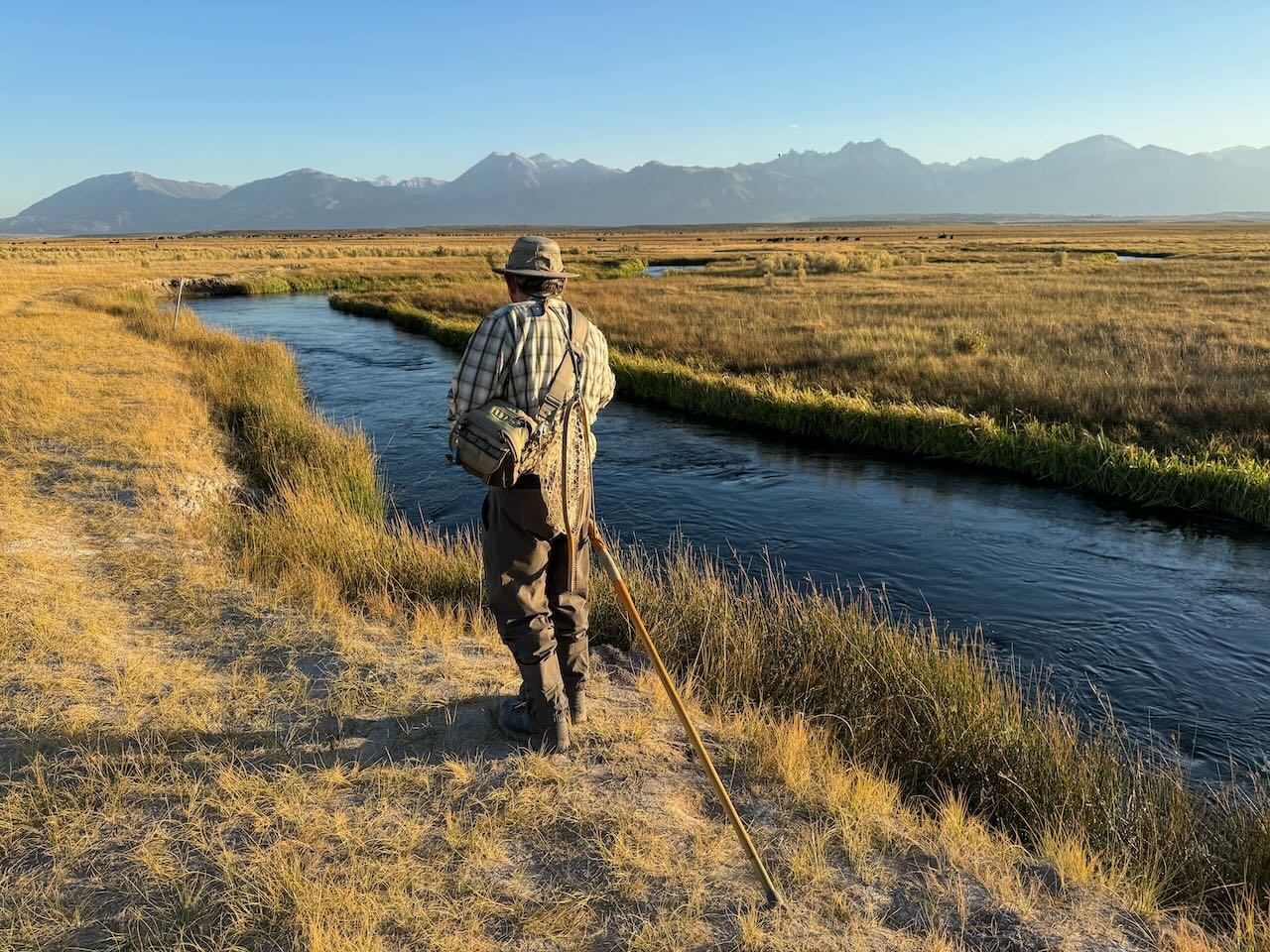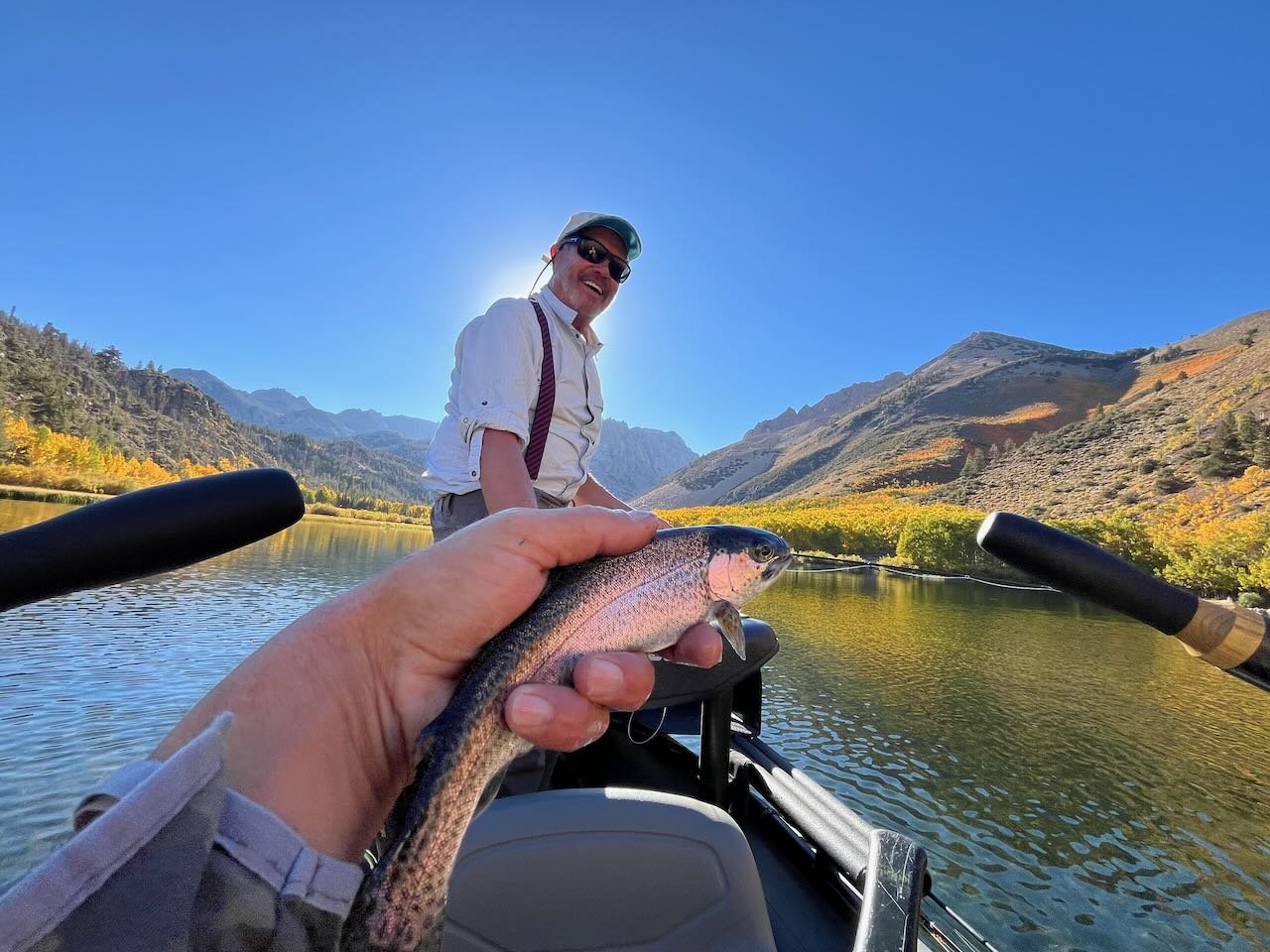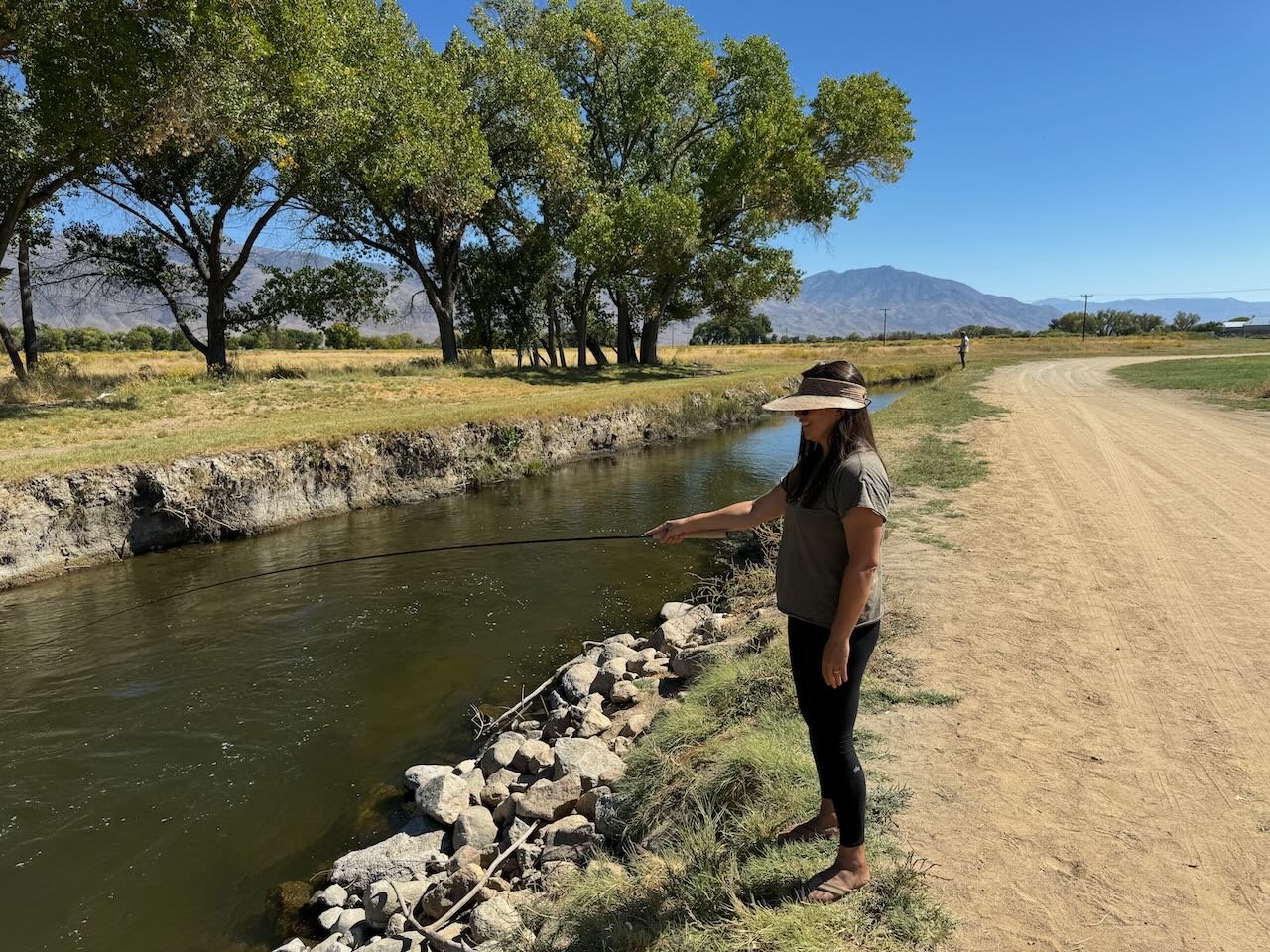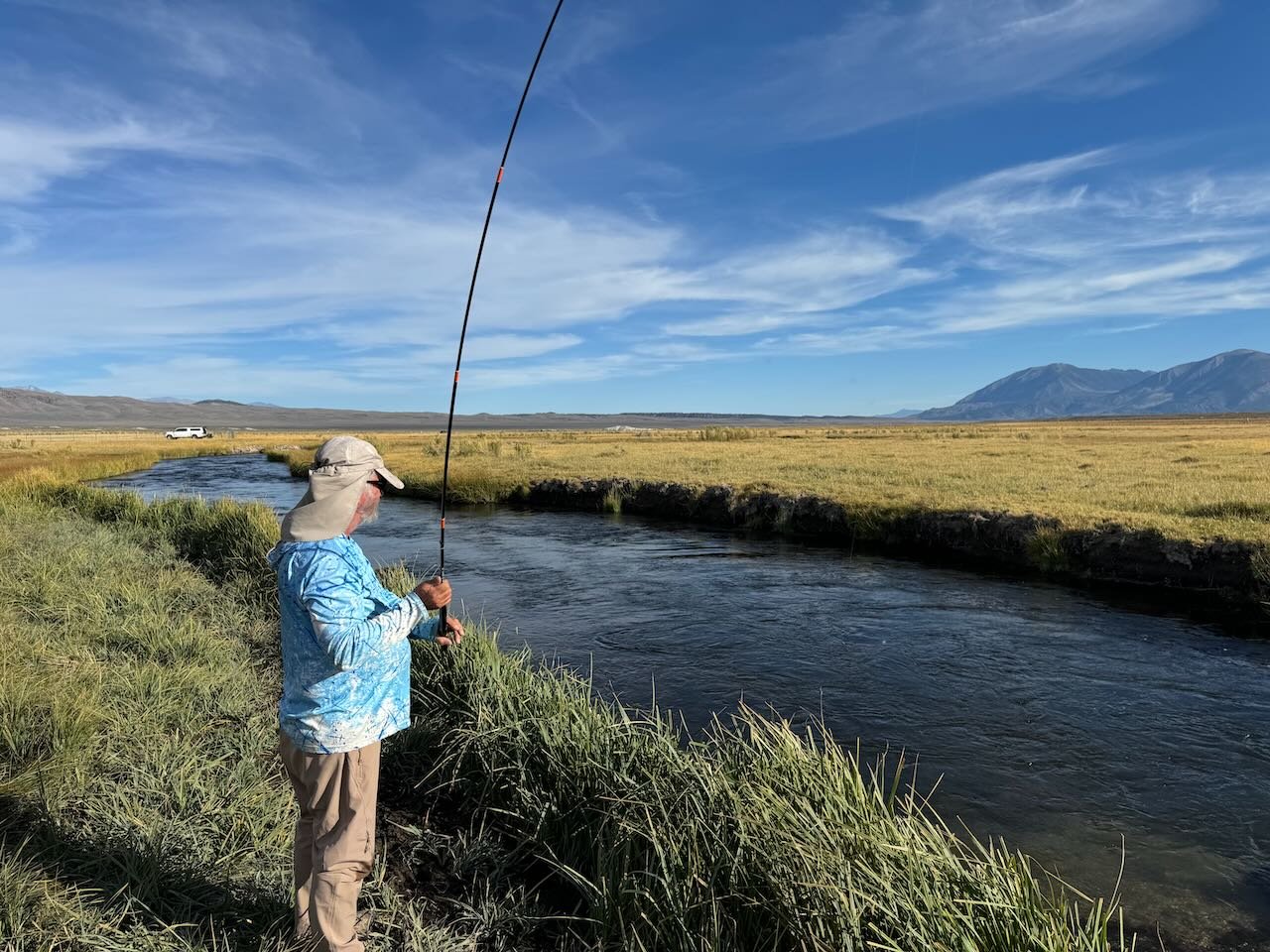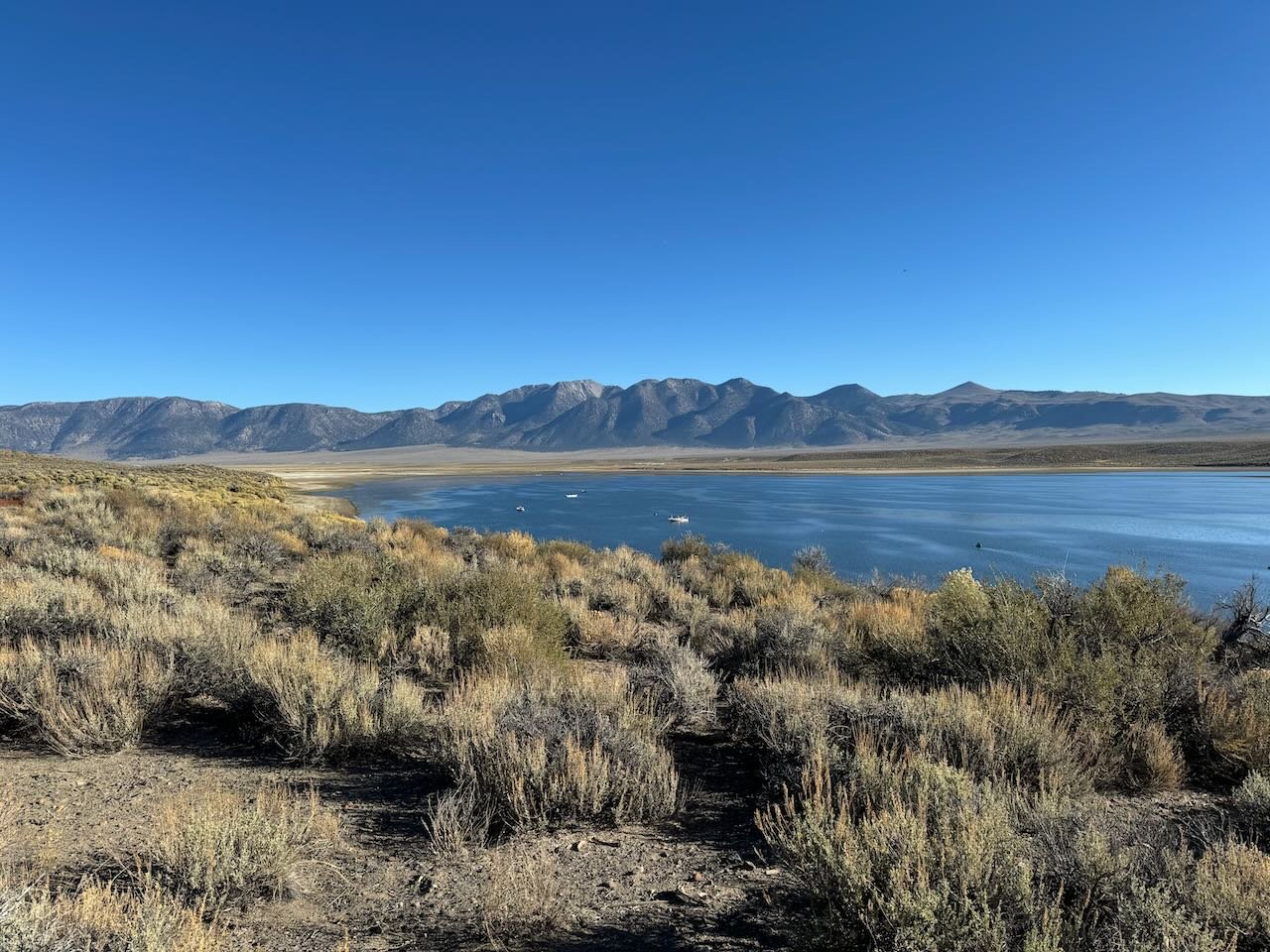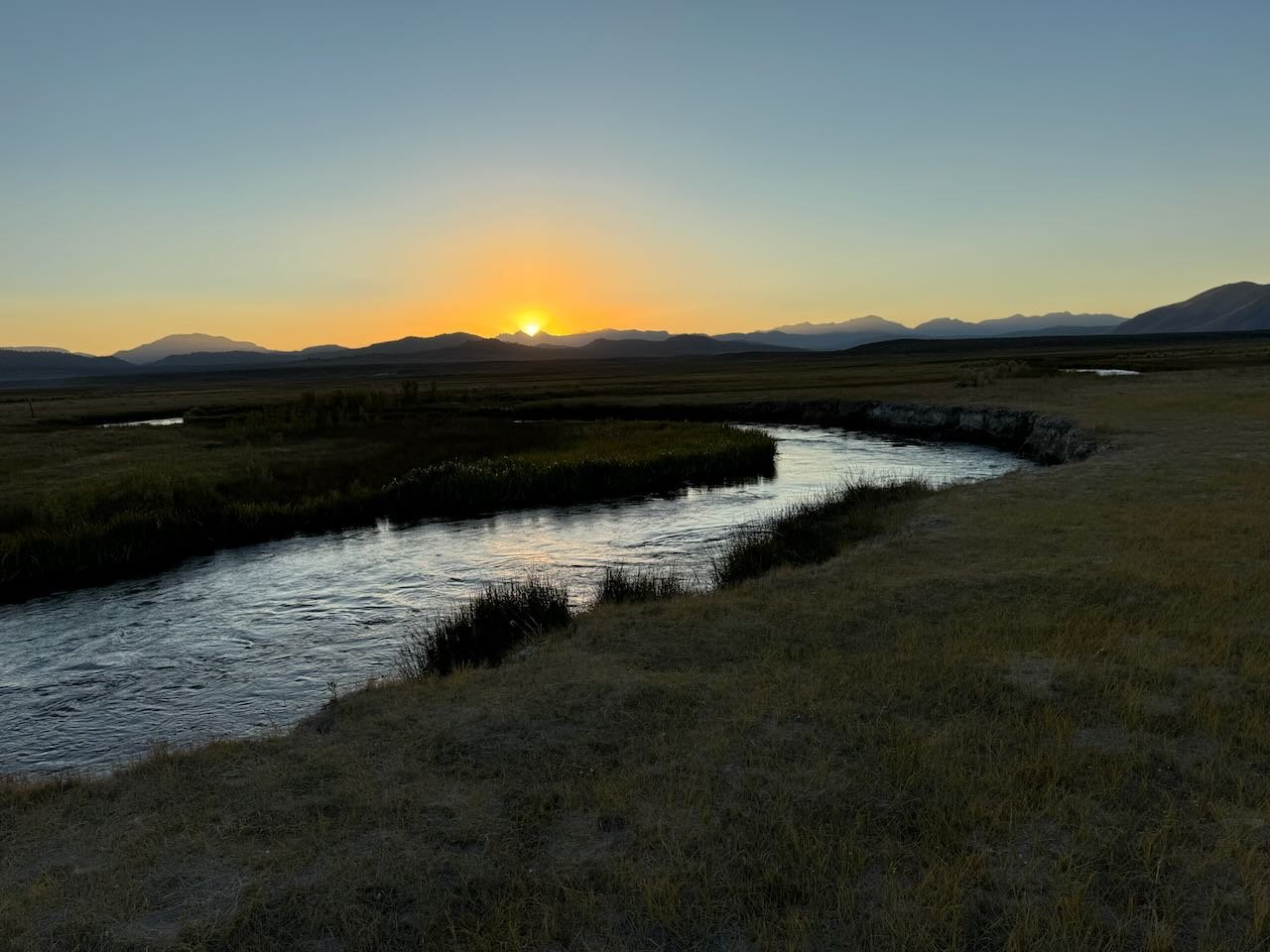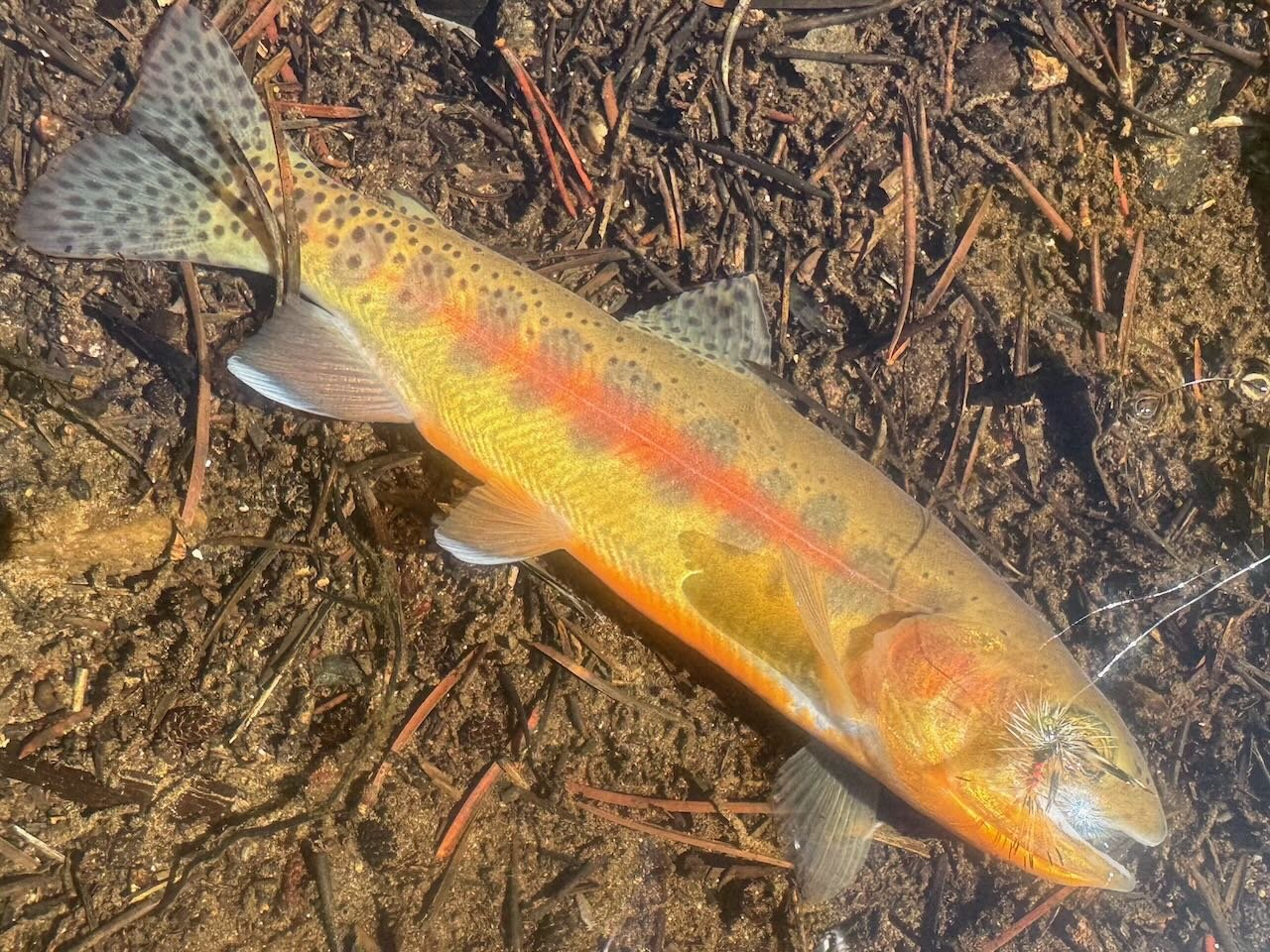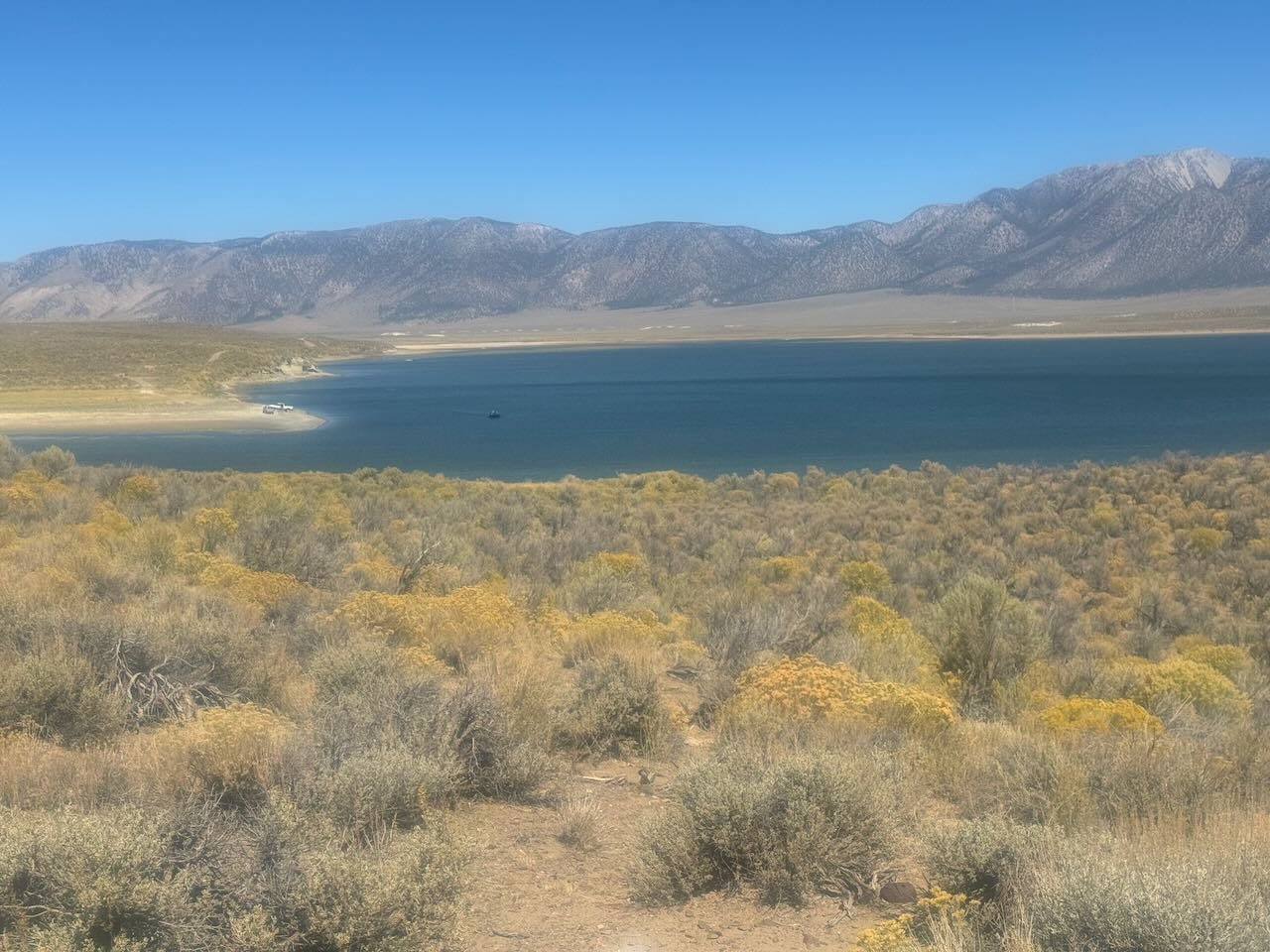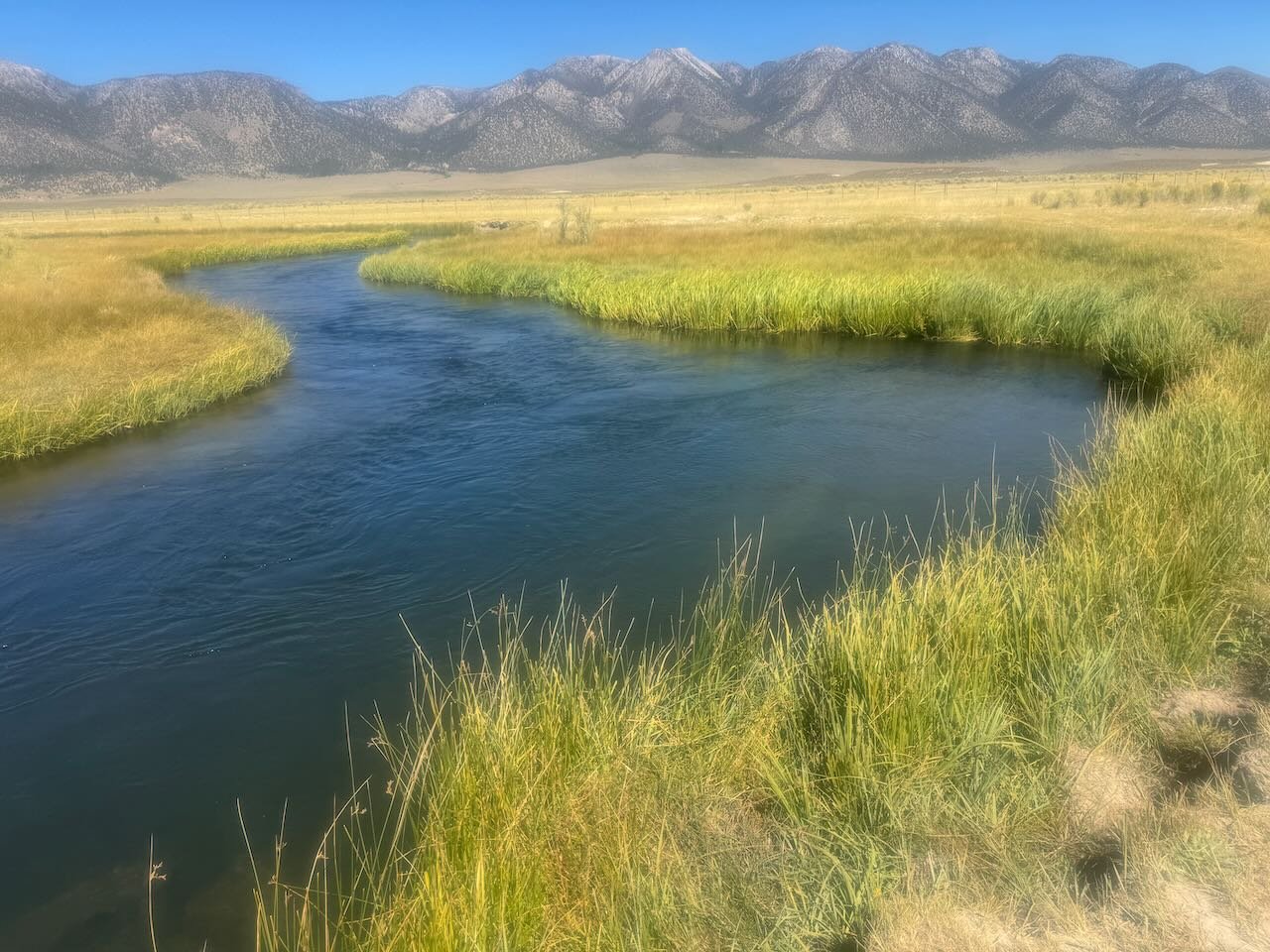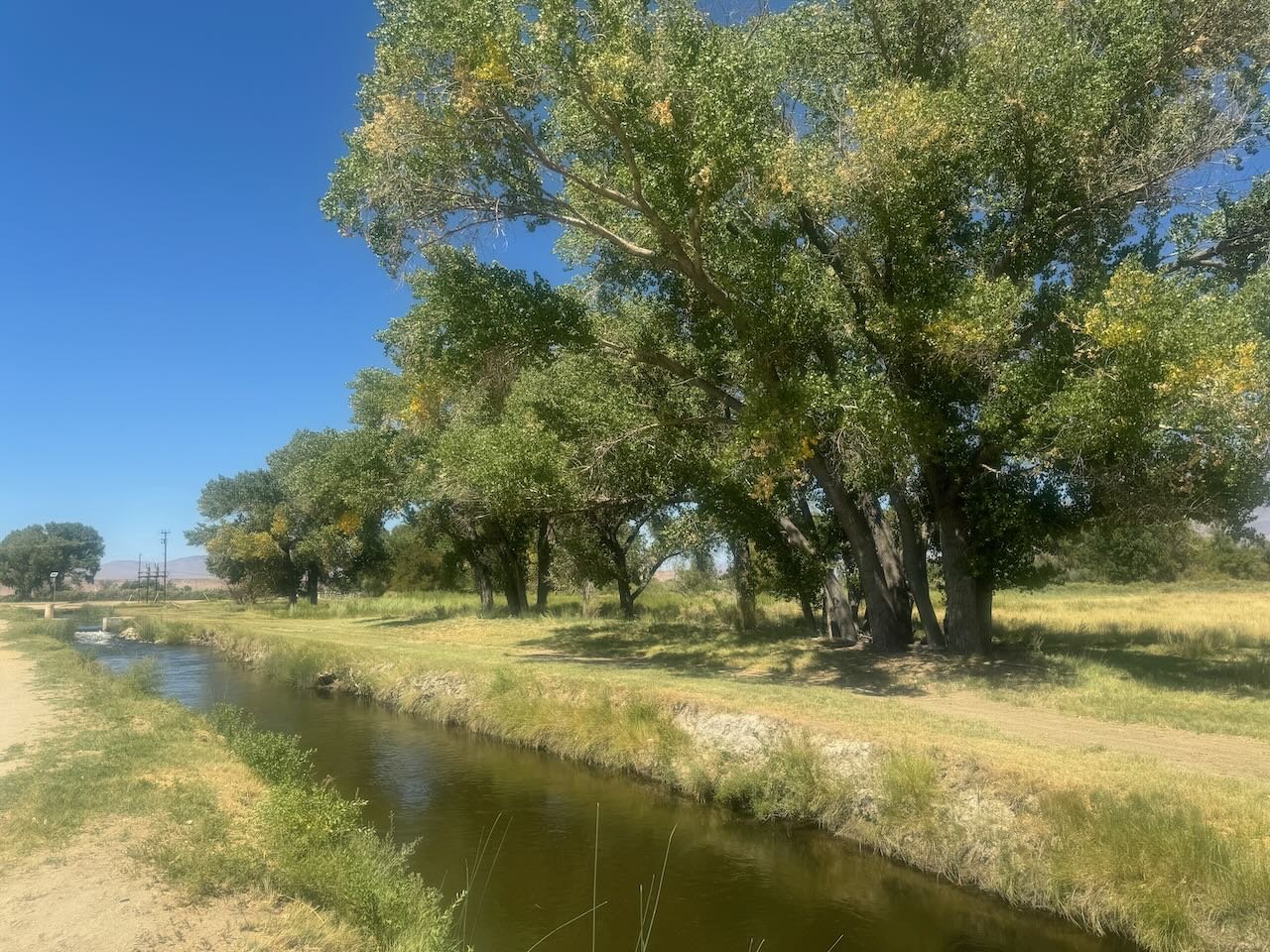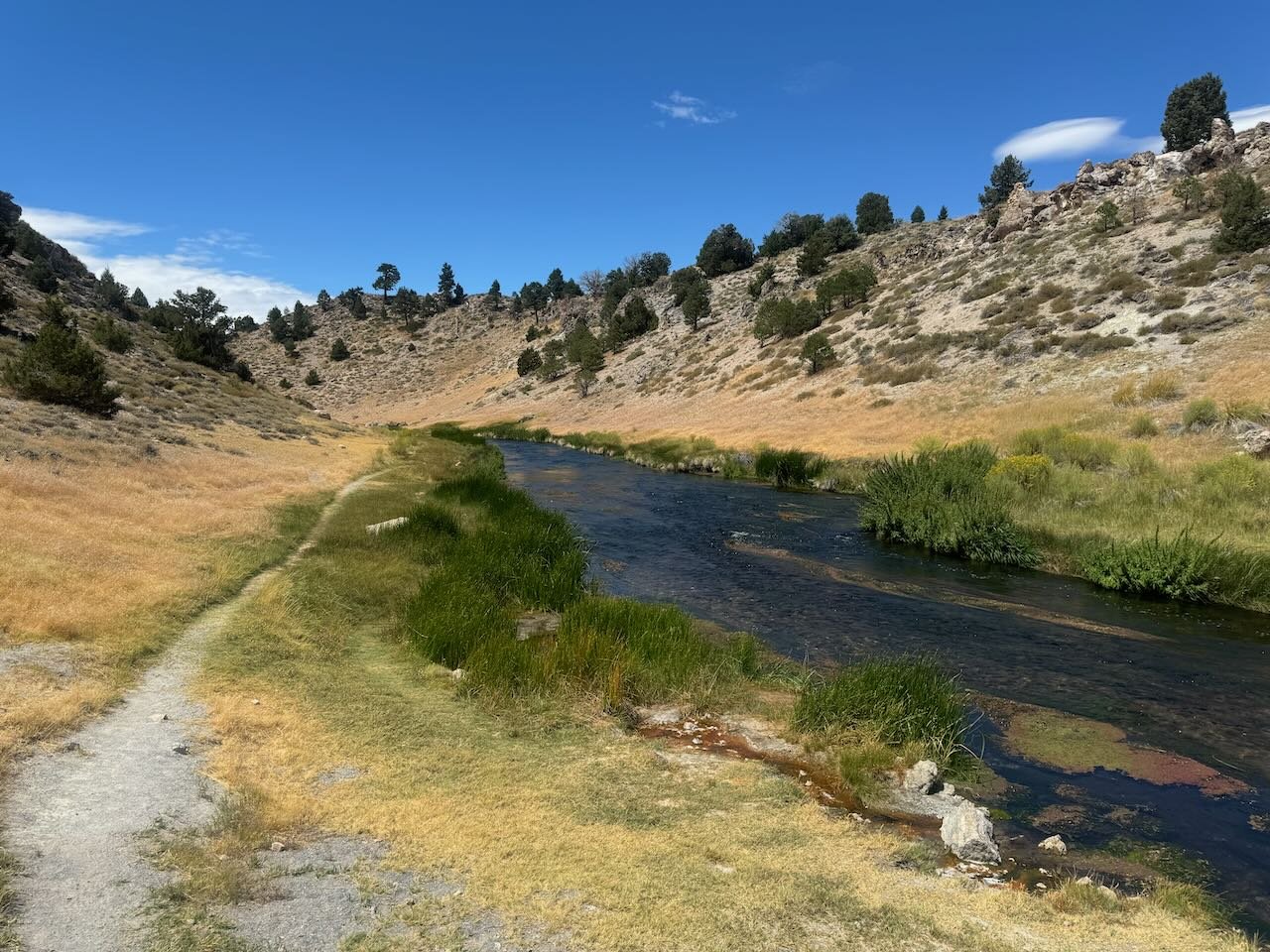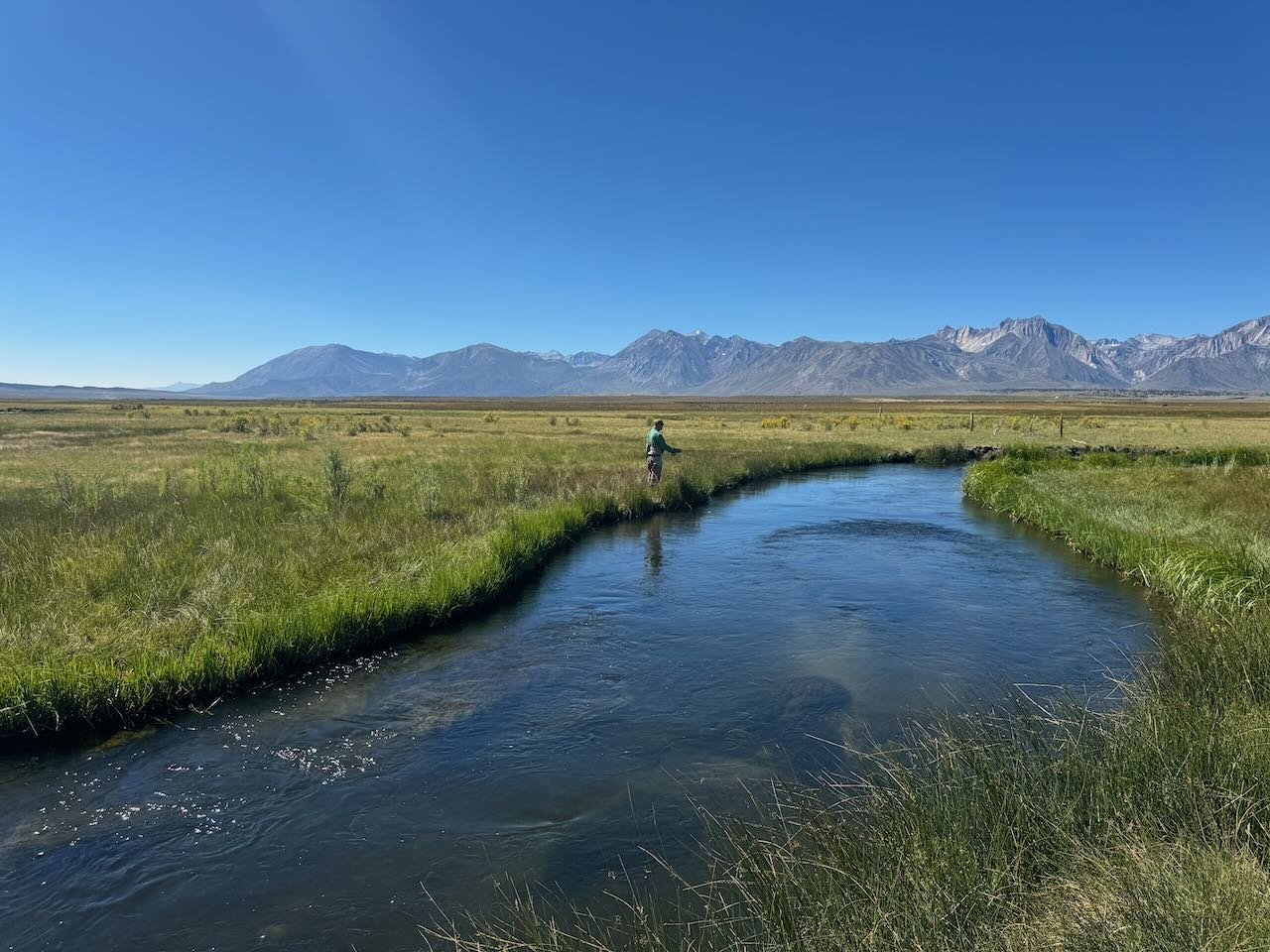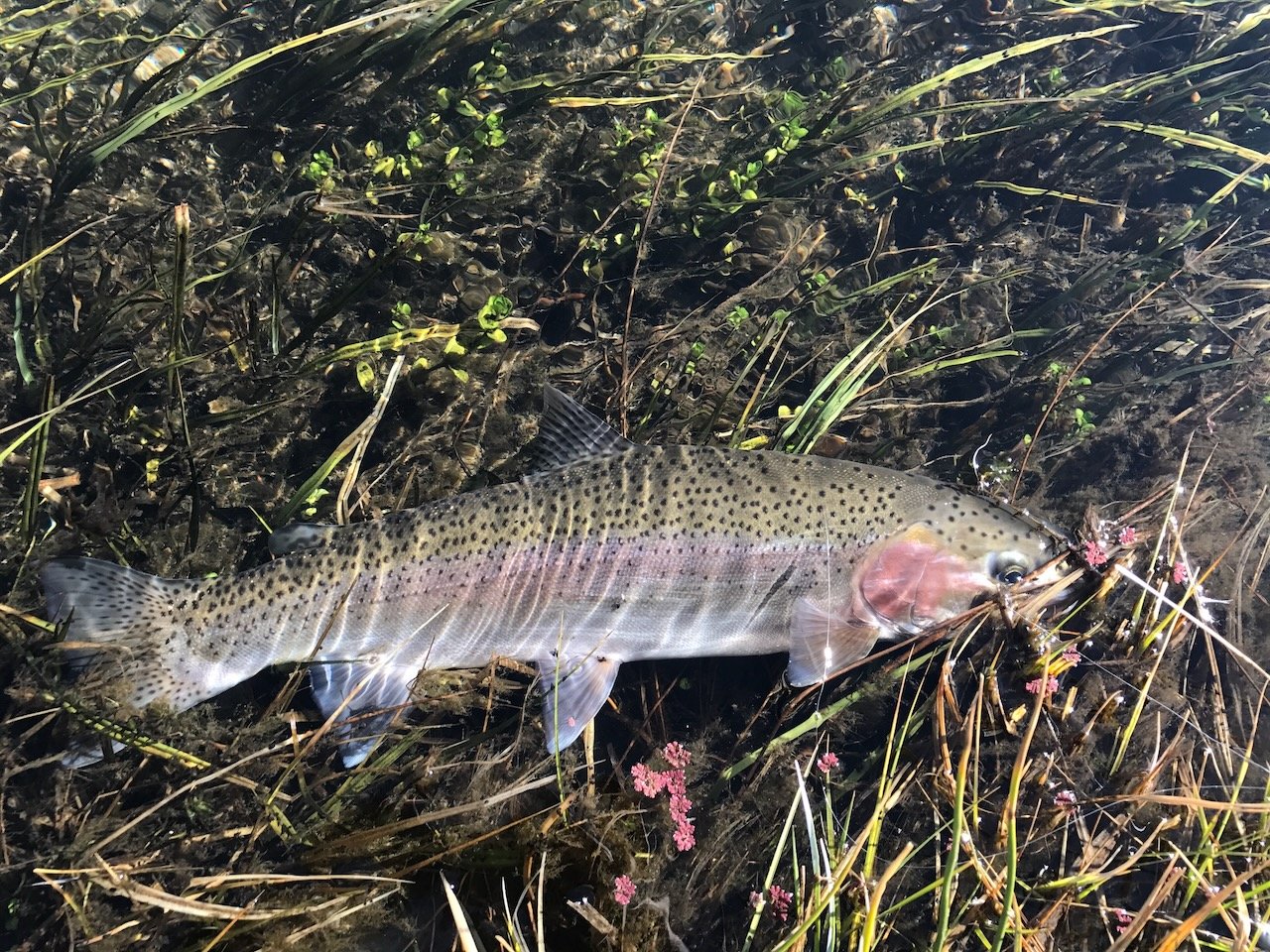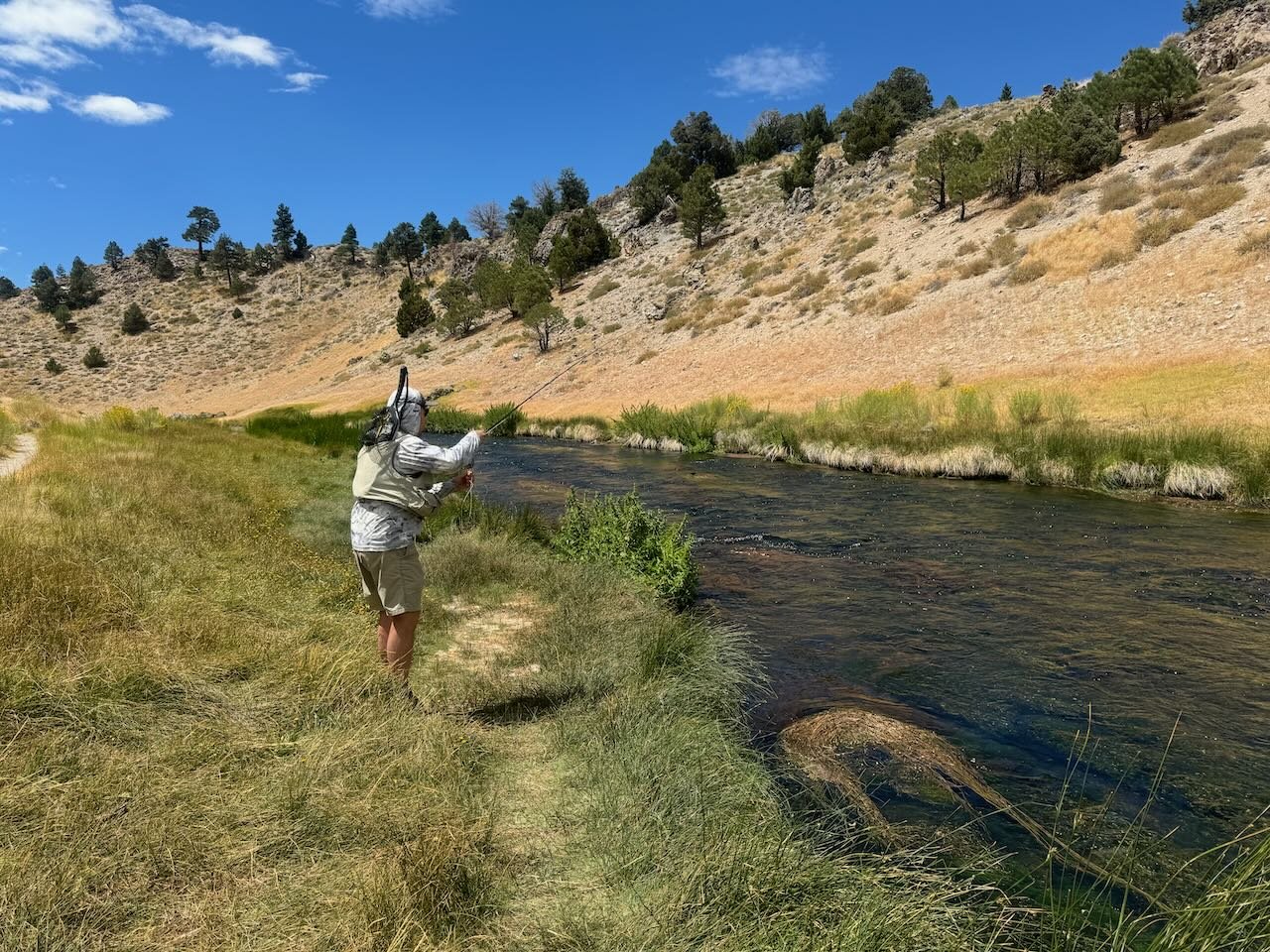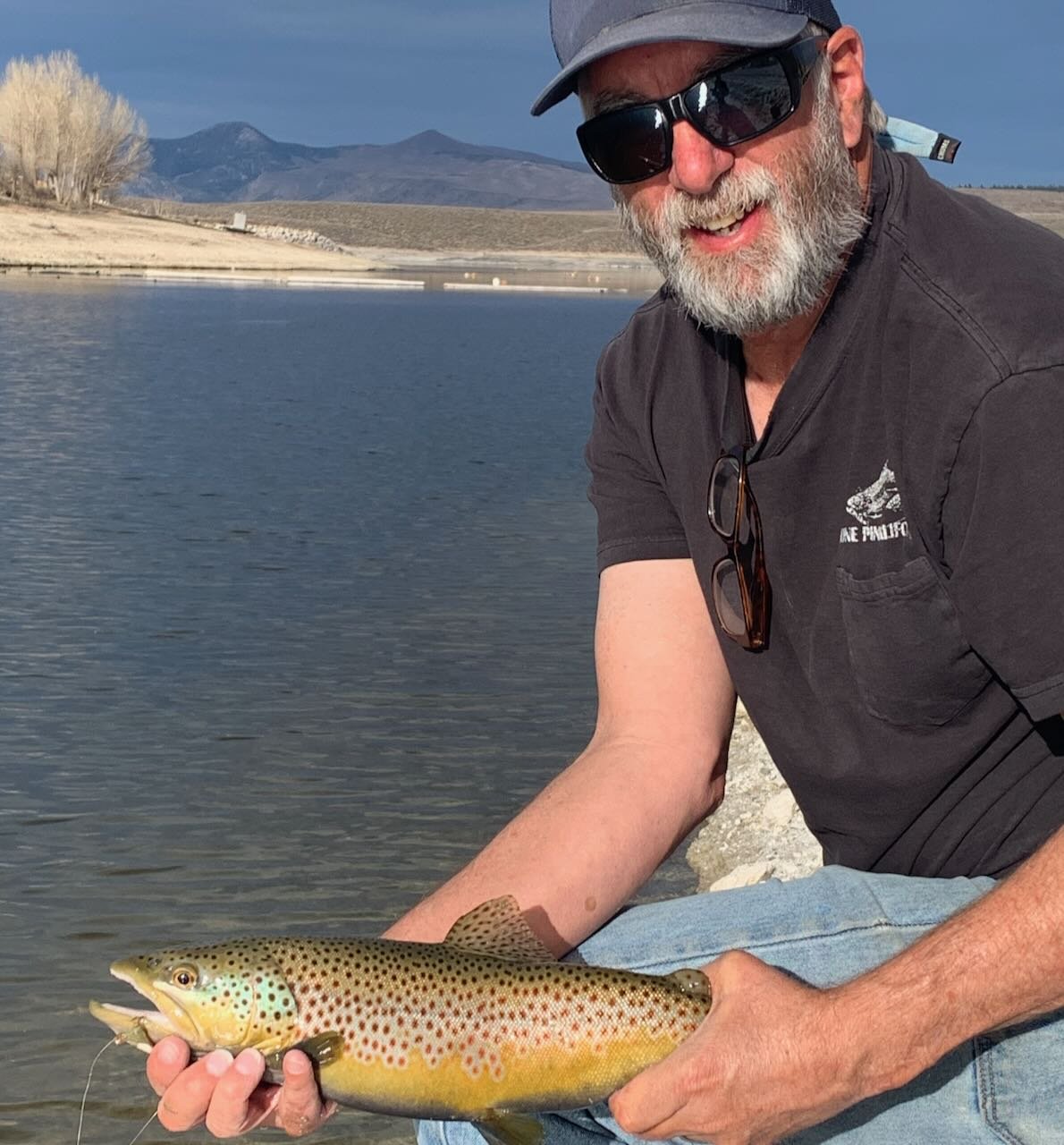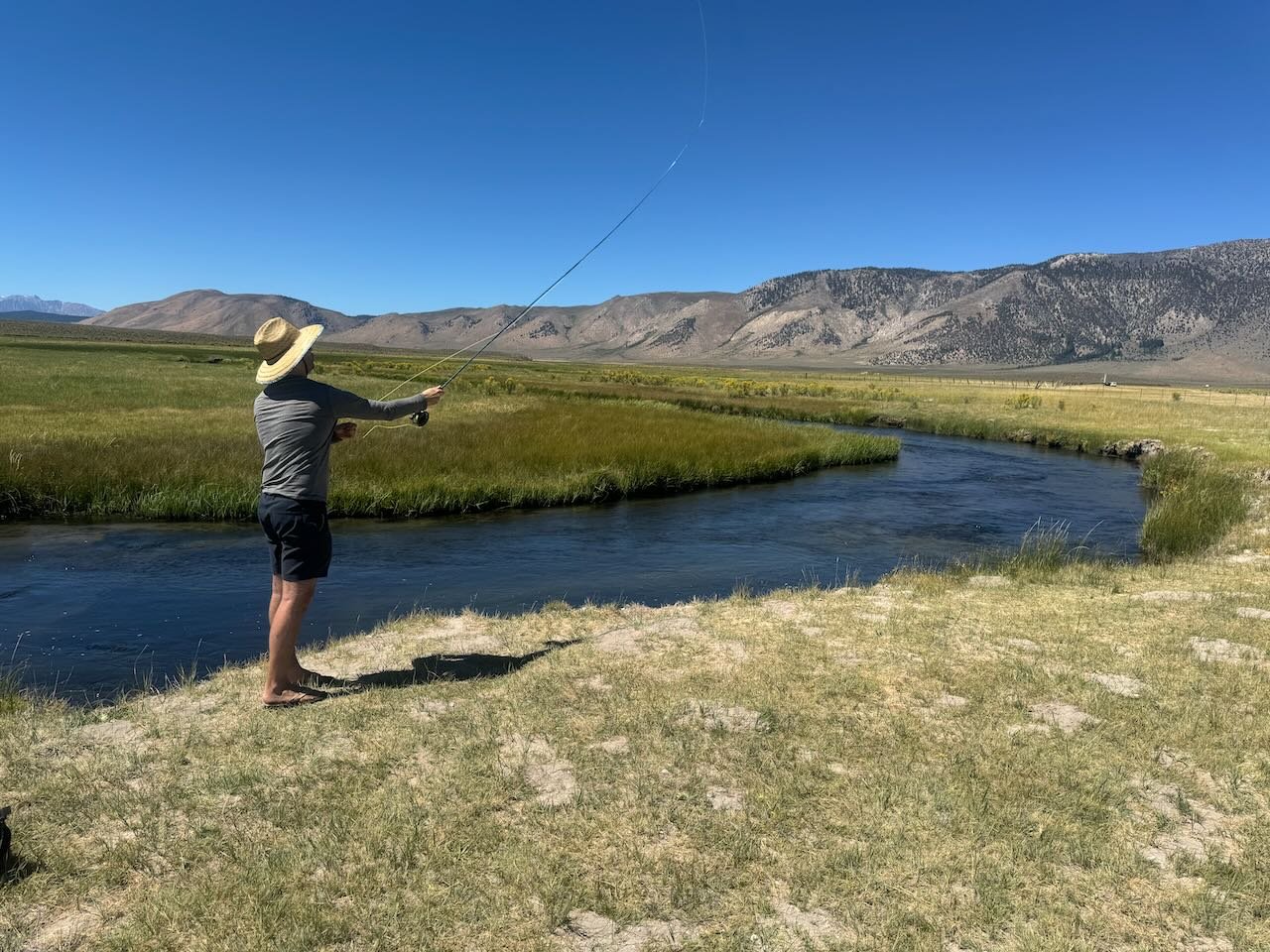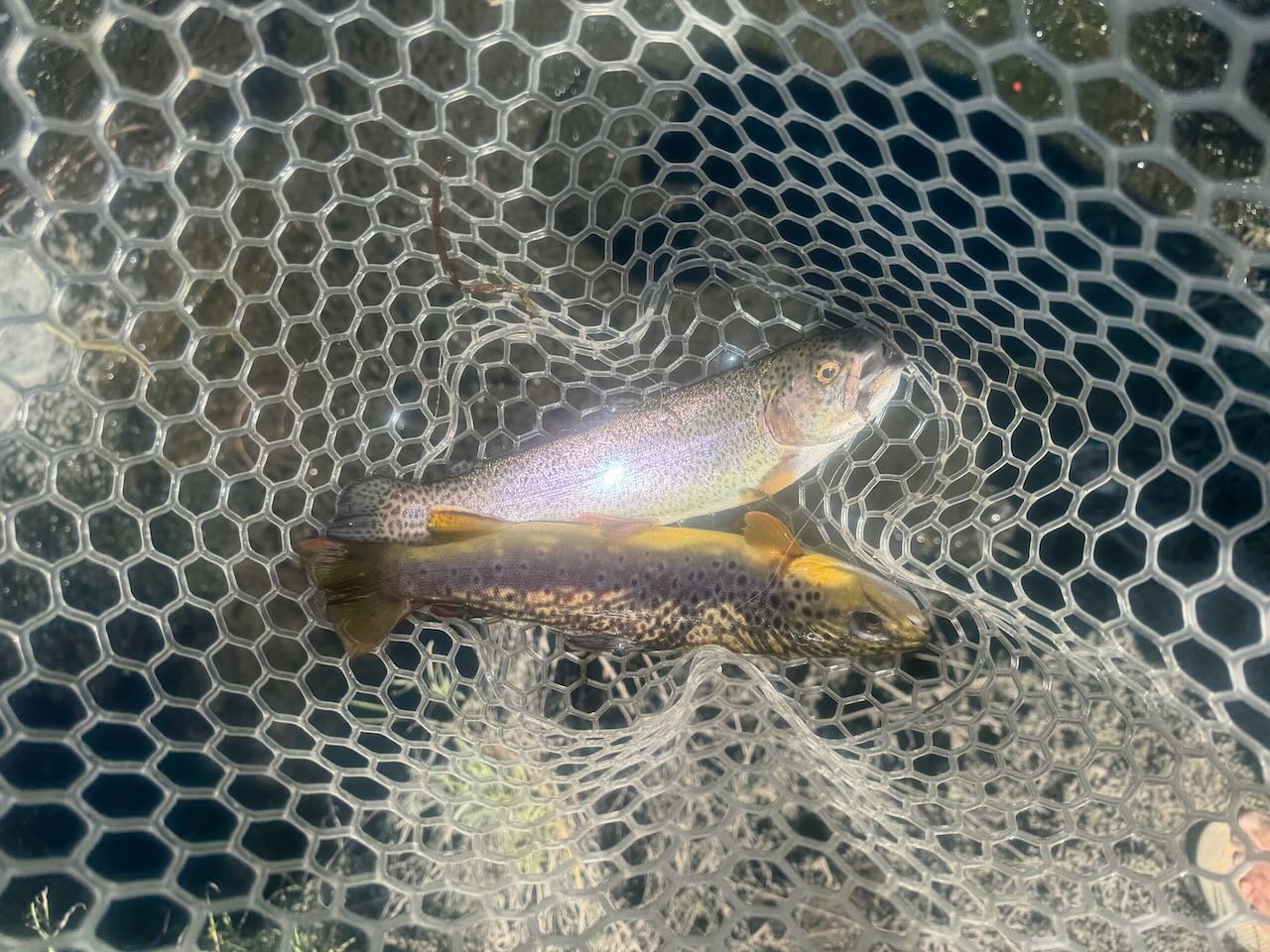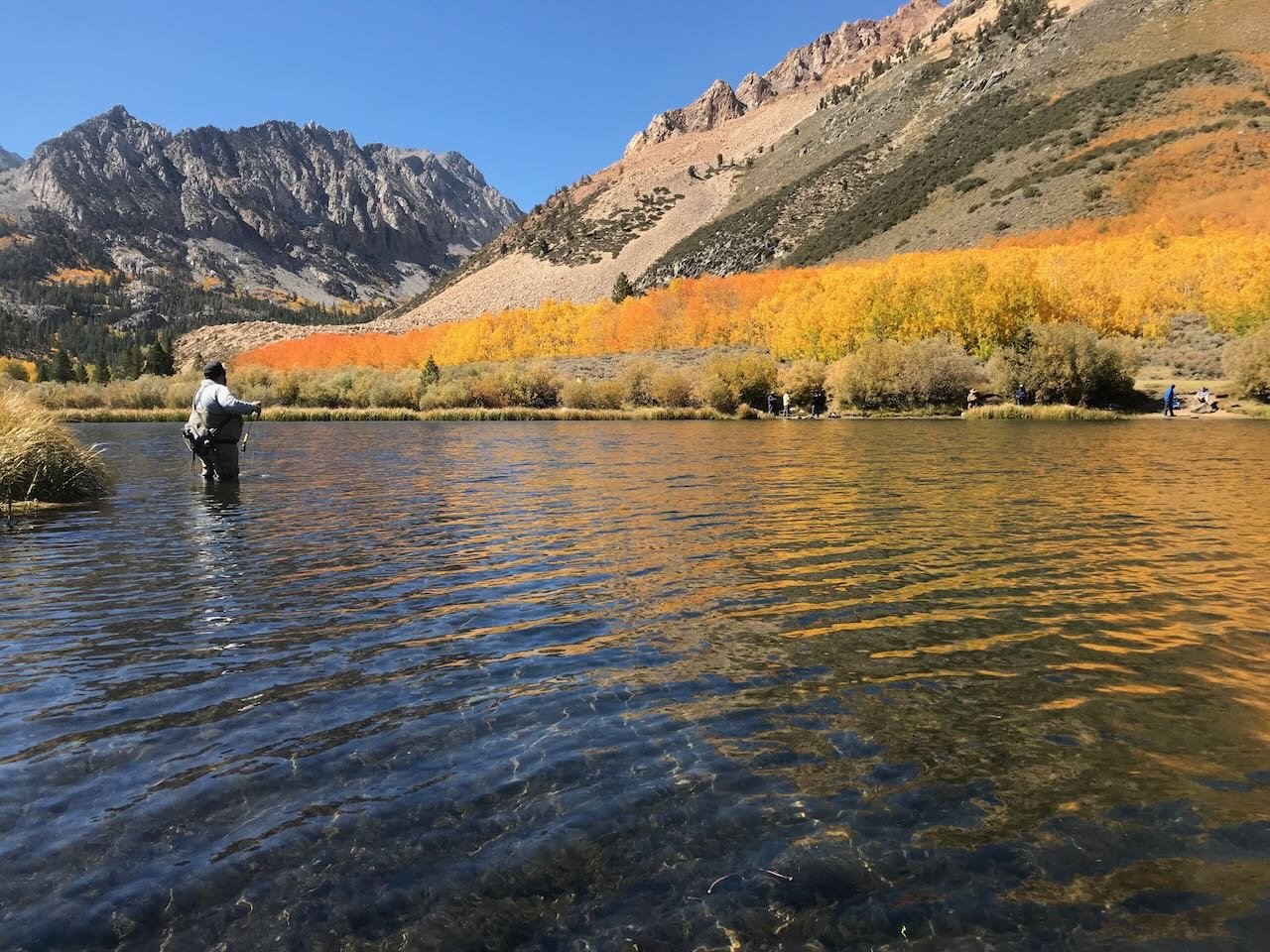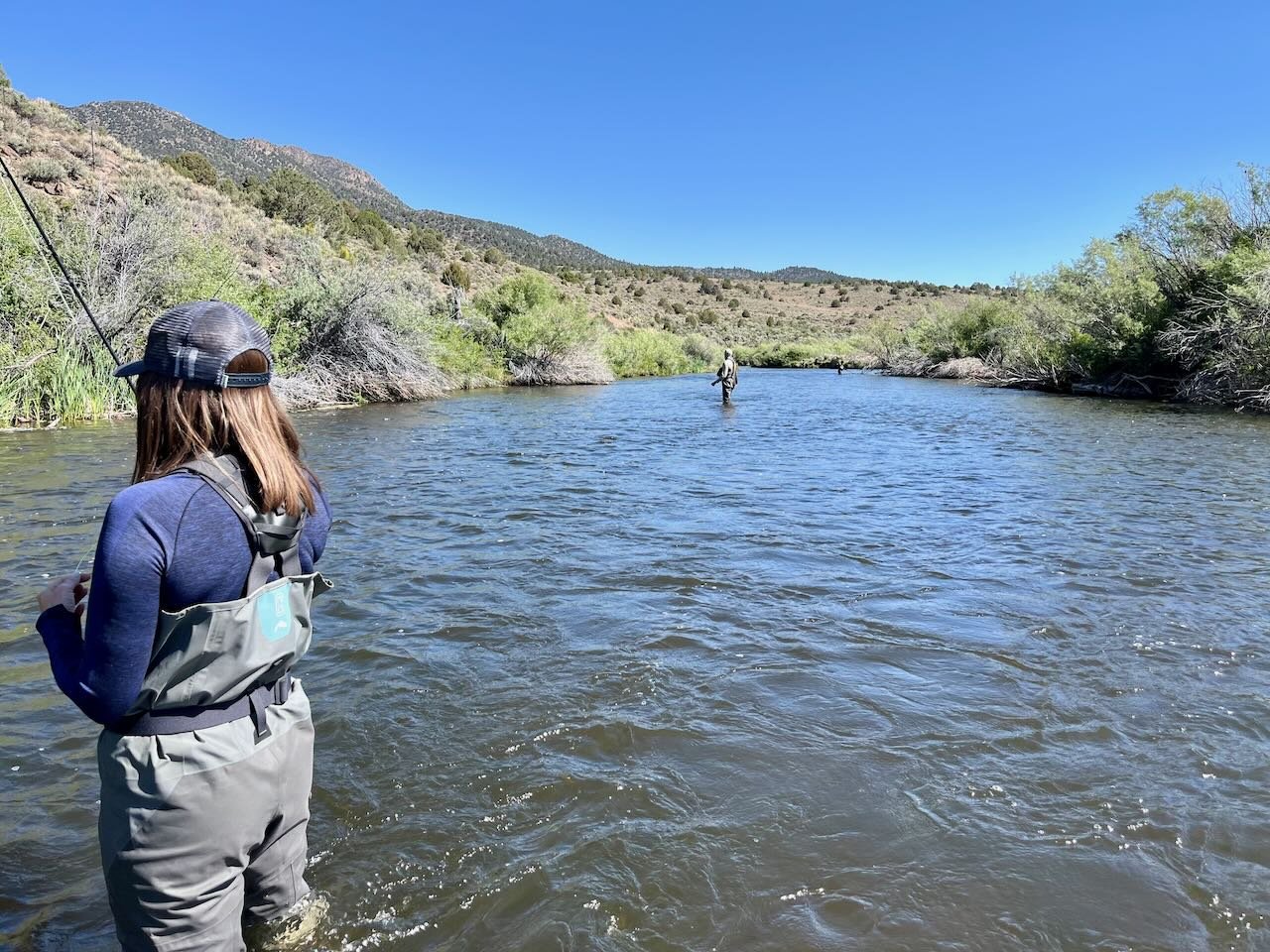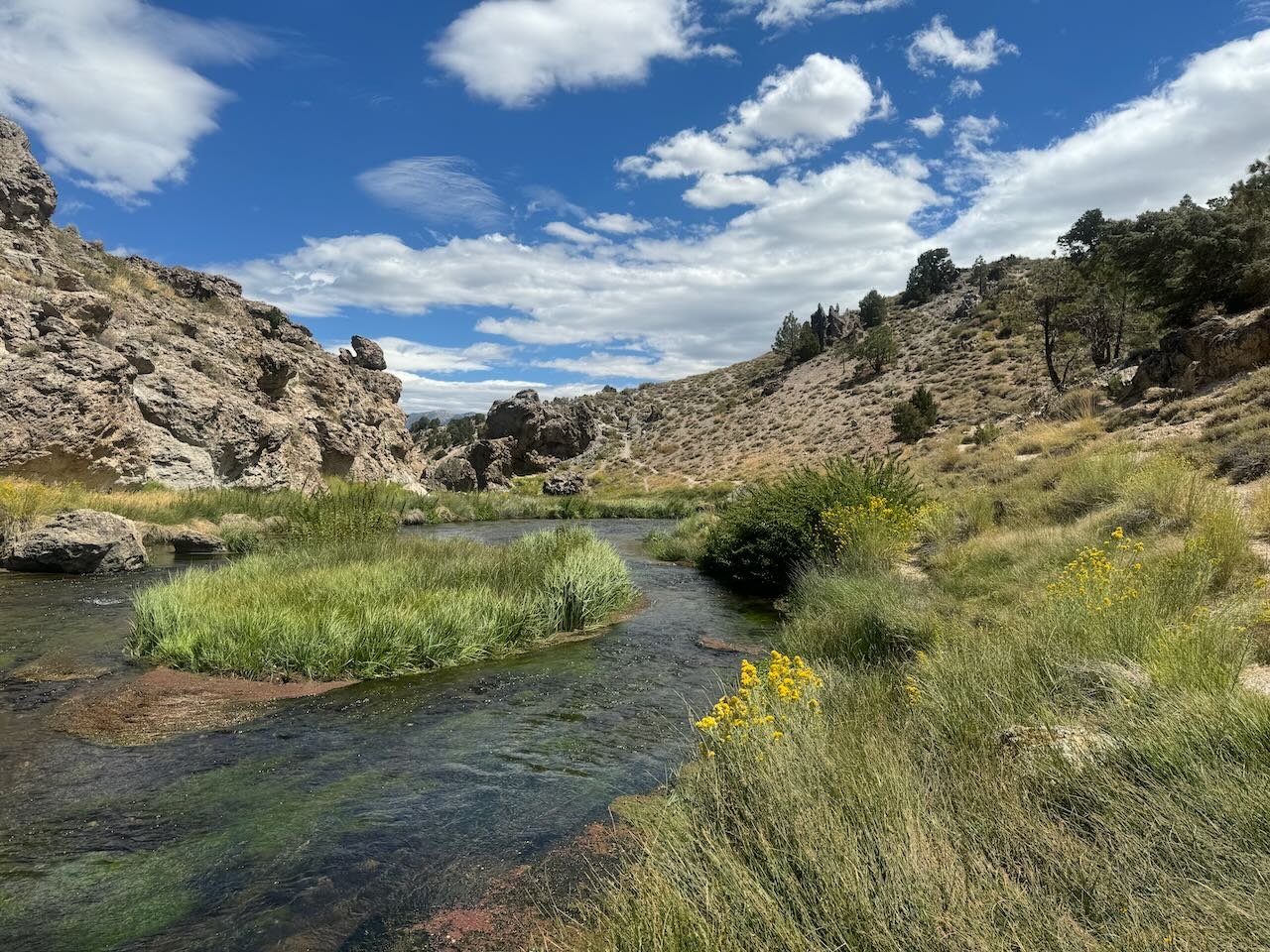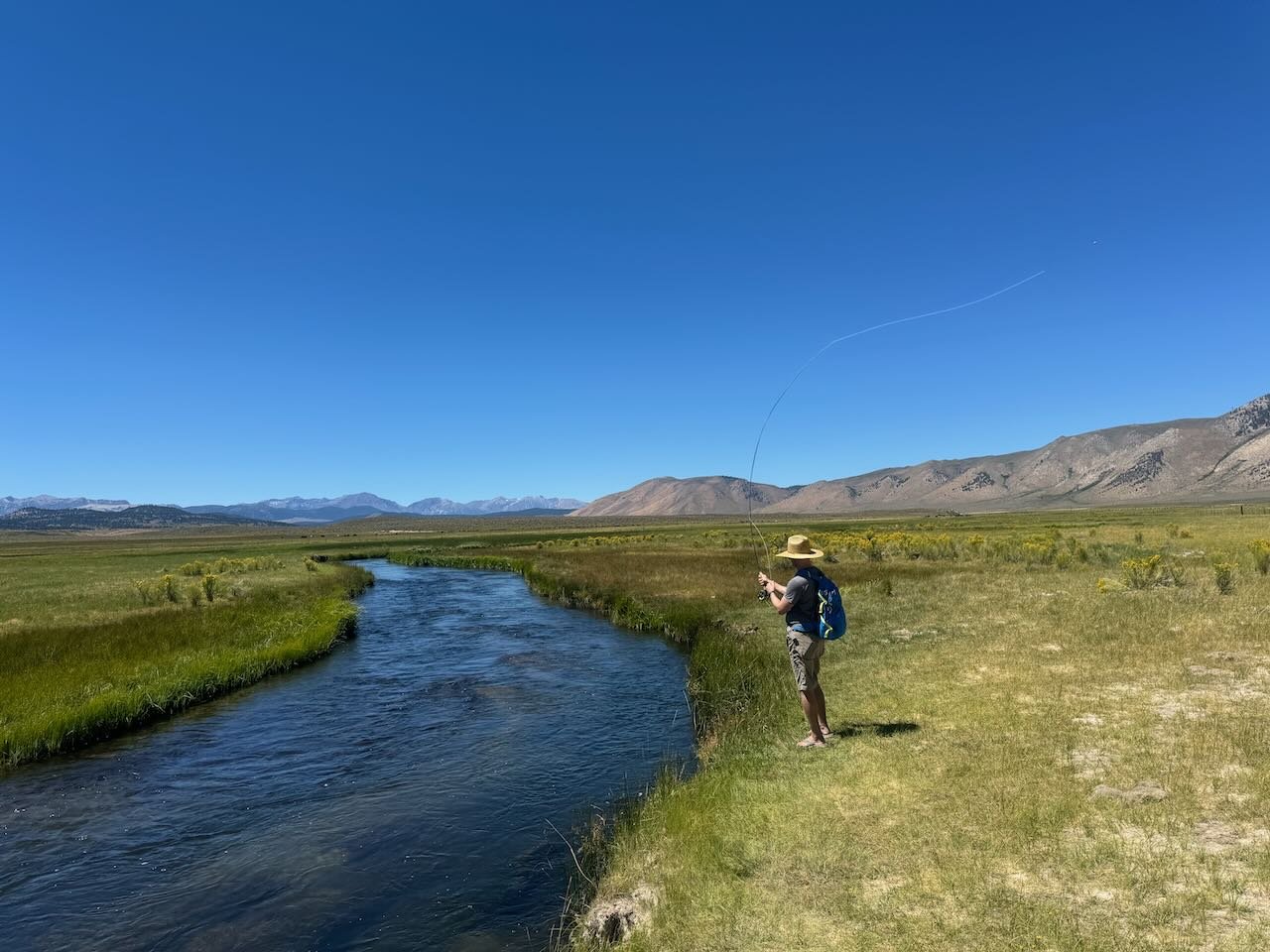October is quickly coming to an end and there is a storm heading towards the Eastern Sierra. Wind is always the problem for fly fishers and unfortunately all of our storms come with lots of wind as they blow into the Eastern Sierra and they blow out. Caddis, midges and mayflies are hatching and the trout are feeding on the nymphs, emergers and adults. Fall colors are over at upper elevations and are slowly coming to the Owens Valley. It’s time to shake off the dust and get out your jackets as we head into winter.
Evenings are coming earlier every day as we head into winter time.
Lower Owens River
Wild Trout Section:
Flows are decreasing. Question is will they continue to drop or will they go back up. Are we are finally seeing the flows on the lower Owens River dropping to their winter levels. Flows under 200 CFS will be optimal. Time will tell if winter fly fishing conditions are upon the lower Owens River.
Is the lower Owens River flows finally decreasing to fishable levels as we head out of Fall.
Hot Creek
Interpretive Site:
Cold mornings are slowing up the hatches. At 8:00 A.M. the temperature is hovering in the mid 30’s. No need to get to the creek early. Hatches of mayflies and caddis are starting around 9:00 A.M. and over by early afternoon. Nymphing under an indicator with a size 18 bead head flash back pheasant tail nymphs, size 18 olive quilldigon, size 20 tiger midges, zebra midges and blood midges is fooling the wild trout of Hot Creek. For the dry flies fish with a size 22 trico dun, trico female dun and trico spinner, a size 20 blue wing olive parachute and a size 20 gray elk hair caddis. Afternoon winds makes it hard to get a good dry fly drift.
Keeping your nymphs from hanging up on the weed beds is the tough part of nymphing in the canyon.
Hot Creek
Canyon Section:
With shallow water and lots of weeds nymphing with a dry and dropper is producing wild rainbow and brown trout. A size 16 Adams Parachute is visible enough to see on the water and know when the trout has taken the nymph. The Adams will have a few fish come to the surface to take the fly. For the nymphs fish with a size 18 bead head flash back pheasant tail nymph, size 18 olive quilldigon, size 20 tiger, zebra or blood midge and a size 12 olive burlap caddis. Fishing a size 20 blue wing olive parachute and a size 20 elk hair caddis in gray imitates the few insects that have been hatching. If these tiny flies are hard to see on the water fish them as a dry and dry behind the Adams parachute. Afternoon winds and getting caught up in the weed beds is a couple of the obstacles that fly fishers need to overcome when fly fishing in the canyon section of Hot Creek.
John Carlson admiring his trophy rainbow trout before releasing it to fight another day.
Crowley Lake
Mouth of the Owens River:
Afternoon winds has most of the fly fishers calling it a day by noon or early afternoon. Midging with zebra midges, tiger midges, gray midges, blood midges and albino Barron’s in ten to 15 feet of water is fooling the trout. Stripping streamers or trolling them is another productive method to catch trophy trout. Fish with olive and purple wool buggers, olive matukas, olive slumpbusters and perch colored balanced leeches.
Working nymphs and dry flies is producing rainbows and browns from three inches to 20 inches.
Upper Owens River
Above Benton Crossing Bridge:
Fishing with size 20 blue wing olive parachutes and size 20 female trico duns is fooling rainbows and browns to 12 inches mid-day. Using a dry and dropper is another way to catch the trout. A size 16 Adams parachute and a size 18 bead head flash back pheasant tail and a size 20 zebra midge is a good combination to produce trout. Euro nymphing with a size 12 stoner nymph, size 12 green/gold Prince nymph and a size 18 olive quilldigon is producing small to trophy trout when fished in the deep holes and runs. Pulling streamers is a great way to get trophy trout if the fly fisher is willing to cover a lot of water in pursuit of trophy trout. Fishing with size 6 and 10 olive wooly buggers, olive slumpbusters, olive matukas, balance leeches and marabou muddlers is producing trophy brown and rainbow trout to 20 inches.
A float tube allows fly fishers complete access to North Lake to present dries, nymph and streamers to the trout.
North Lake:
The back drop of fall color is gone, but hatchery and wild trout continue to feed on nymphs and dries. Trolling a size 14 olive wooly bugger is a very productive method of fooling the hatchery trout. Fishing with a dry and dropper rig will fool the stocked rainbow trout and the wild brown and brook trout. For the dry fly fish with a size 12 or 14 stimulator, elk hair caddis or Adams parachute. For the nymphs fish with size 16 bead head flash back gold ribbed hare’s ears, size 18 bead head flash back pheasant tail nymphs size 16 tiger, zebra and blood midges. Fly fishing out of a float tube gives fly fishers complete access to the lake. Fly fishing the flooded flats in the area of the inlet is a great spot for fly fishers without a water craft to present their flies to the cruising trout.
Weir Pond is a great place to catch spawning brown and brook trout on dry flies and nymphs.
Bishop Creek
South Fork at Weir Pond:
The winds have all but decimated the fall foliage on Weir Pond. Fly fishing with dry flies and nymphs continues to produce rainbow, brown and brook trout. The best dry fly to fish is your favorite dry fly in a size 14 or 16. My favorite dry flies for opportunistically feeding trout are royal Wulff’s, elk hair caddis and Adams parachute. These flies are easy to see on the water as they have very visible wings. For the nymphs fish with size 16 bead head flash back gold ribbed hare’s ears, size 18 bead head flash back pheasant tail nymphs and size 18 tiger, zebra and blood midges. Waders are a must for fly fishing this area.
Low flows mean the trout in Bishop Creek Canal are spooky and fly fishers need to present their nymphs on the water with stealth.
Bishop Creek Canal
Behind Bishop Veterinary Hospital:
Nymphing continues to be the most productive method of fly fishing Bishop Creek Canal. Indicator nymphing and Euro nymphing are both productive ways to fly fish the canal. For the nymphs use size 18 olive quilldigons, size 16 hot spot pheasant tail nymphs, size 12 stoner nymphs, size 12 green/gold Prince nymphs, size 16 bead head flash back pheasant tail nymphs, size 18 bead head flash back pheasant tail nymphs and size 18 blood, zebra and tiger midges.



